


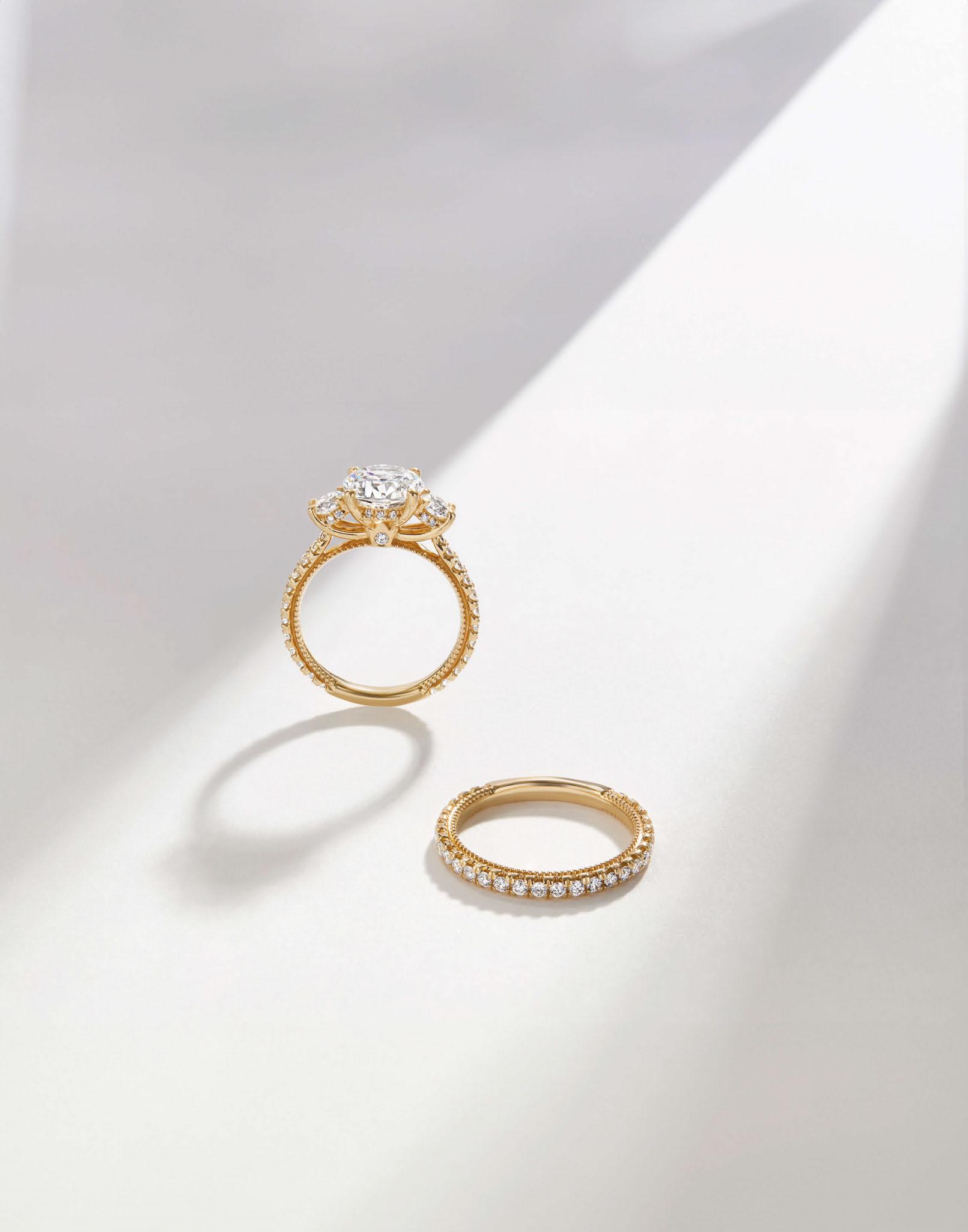

JOHNSON LEXUS OF RALEIGH
JOHNSON LEXUS OF DURHAM AT SOUTHPOINT







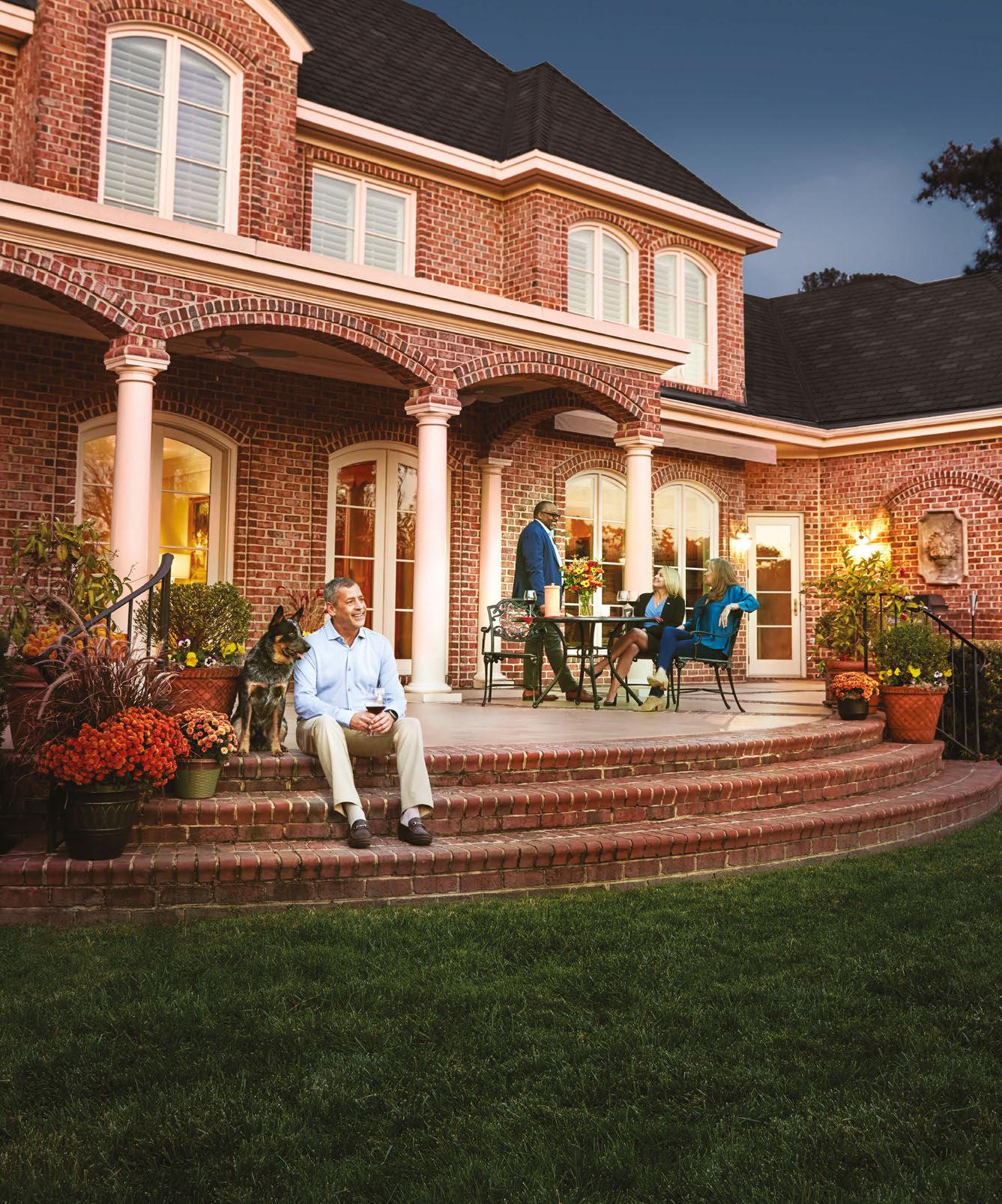
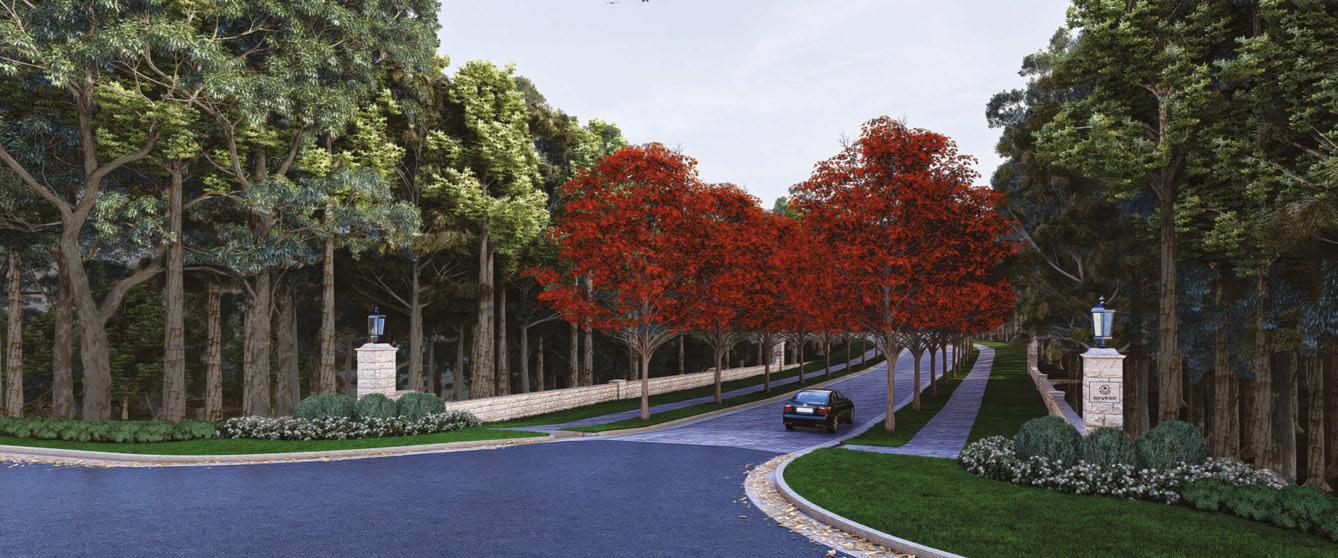



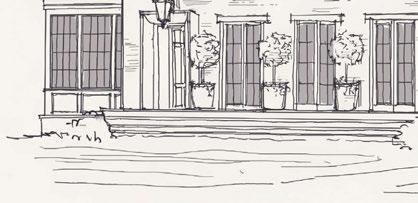
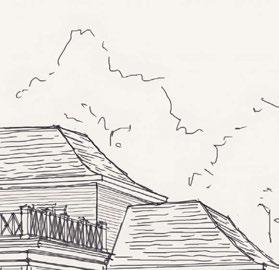


















































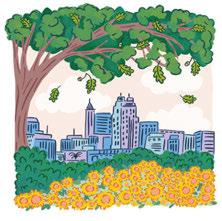

What does your perfect Raleigh weekend look like? For me, it’s about spending time with family and friends, making sure to move our bodies and resetting the house before the workweek starts again.
But it’s also the time we make the effort to get out and do something, whether that’s walking to a coffee shop for a treat, eating out at a restaurant or going for a little hike nearby. Making those plans takes a little work, especially choosing a restaurant, given the plethora of options. Do we want to go to an easy, walkable favorite? Should we (gasp) make a reservation in advance and eat somewhere new and buzzy? Do the kids get to come? And if we’re dining with friends, my husband and I enjoy choosing the perfect spot based on folks’ food limitations, time preferences, ideal ambiance, tolerance for noise, what we might do before or afterwards, and more.
Add to the mix that, since I work for WALTER, I often have the privilege of being the first to try out new bars and restaurants, as well as to hear about the latest exhibits, performances and other cultural events. Which makes things both easier (I know all the options!) and harder (I know all the options).
All this to say: I nerd out on making these choices. All of us at WALTER do.
And now we’re turning the question of “what to do this weekend?” into a publication of its own.
This month, we’re debuting OUR TOWN, an annual insider’s guide to Raleigh. It’s basically a compendium of WALTER’s recommendations, broken down into the categories that we think will be most useful to you. Inside, you’ll find inspiration to explore a different neighborhood, dine at a restaurant you’ve never been to or shop at that store you always wondered about. My goal is for you to keep one copy on your coffee table and the other in your guest room, so that the next time someone in your household wants to make a plan, they pick up OUR TOWN instead of a smartphone. You can find OUR TOWN at area retailers.
My hope is that OUR TOWN helps you broaden your palate and appreciate what we’ve got — but most of all, to live to the fullest in this wonderful city we call home.

Ayn-Monique Klahre Editor





SEPTEMBER 2025
PUBLISHER
DAVID WORONOFF
EDITORIAL
Editor
AYN-MONIQUE KLAHRE ayn-monique@waltermagazine.com
Creative Director
LAURA PETRIDES WALL laura@waltermagazine.com
Associate Editor
ADDIE LADNER addie@waltermagazine.com
Contributing Poetry Editor
Jaki Shelton Green
Contributing Copy Editor Finn Cohen
Contributing Writers
Sylvia Adcock, AJ Carr, Catherine Currin, Jim Dodson, Mike Dunn, Amal Kassir, Colony Little, David Menconi, Jarrett Van Meter, Molly Schoneveld, Helen Yoest
Contributing Photographers
Rosy Alexander, Liz Condo, Forrest Mason, Elaine Perkinson, Eamon Queeney, Bryan Regan, Joshua Steadman,
Contributing Illustrators
Alia El-Bermani, Gerry O’Neill
Interns
Lexi Amedio, Molly Asbill, Helen Connor
BUSINESS
Advertising Sales Manager JULIE NICKENS julie@waltermagazine.com
Senior Account Executive & Operations
CRISTINA BAKER cristina@waltermagazine.com
Finance HENRY HOGAN 910-693-2497
Distribution JAMES KAY
Owners
JACK ANDREWS, FRANK DANIELS III, DAVID WORONOFF In memoriam FRANK DANIELS JR.
GENERAL Inquiries
WALTER OFFICE 984-286-0928 info@waltermagazine.com
Address all correspondence to: WALTER magazine 421 Fayetteville Street, Suite 104 Raleigh, N.C. 27601
WALTER is available by paid subscriptions for $36 a year in the United States, as well as select rack and advertiser locations throughout the Triangle. Subscribe online at waltermagazine.com/subscribe
For subscription and customer service inquiries, please email us at customerservice@waltermagazine.com or call 818-286-3118. WALTER does not accept unsolicited manuscripts. Please contact Ayn-Monique Klahre at ayn-monique@waltermagazine.com for freelance guidelines.
© WALTER magazine. All rights reserved. No part of this publication may be reproduced in any form without the express written consent of the copyright owner. Published 12 times a year by The Pilot LLC.


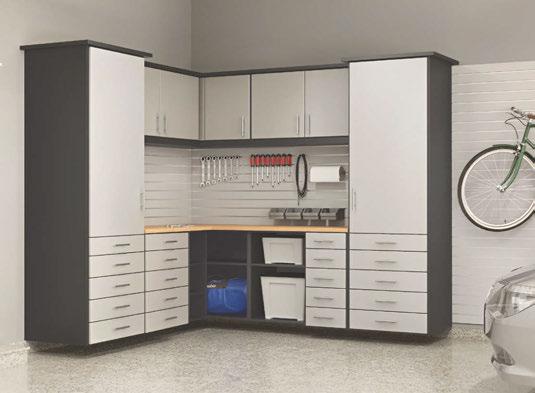
Terms and Conditions: $300 off any order of $1198 or more,$200 off any order of $998-$1198 or $100 off any order of $698-$998, on any complete custom closet, garage,or home office unit. Not valid with any other offer. Freeinstallation with any complete unit order of $600 or more. With incoming order, at time of purchase only. For a limited time SPECIAL FINANCING for 18 months *with approved credit* Expires in 90 days. Offer not valid in all regions.
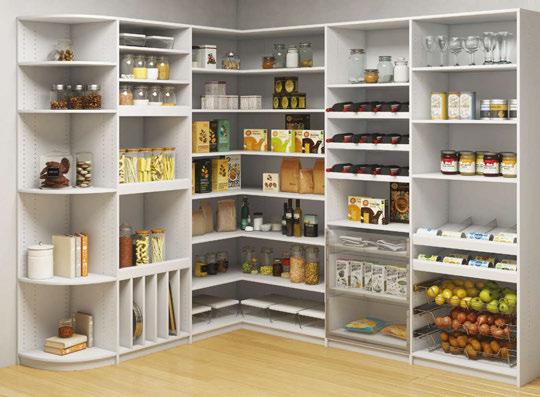






D.Lacquaniti Trunk Show Thu, 28 - Sat, 30 August
Anatomie Trunk Show Fri, 5 - Sat, 6 September
Serotone Trunk Show Thu, 11 - Sat,13 September
Blu Ice Trunk Show Thu, 18 - Sat, 20 September
Marta’s Cashmere Trunk Show Fri, 3 - Sat, 4 October
Gabor Trunk Show Fri, 3 - Sat, 4 October
Tom+Linda Platt Trunk Show Thu, 9 October - Sat, 11 October
Toccin Trunk Show Fri, 17 October - Sat, 18 October
Algo Trunk Show Thu, 30 October - Sat, 1 November

Amal Kassir is a Syrian-American poet, Poet Laureate of Hillsborough and founder of House of Amal. She has performed in 13 countries, launched a youth mental wellness program and released Scud Missile Blues (2024), donating all proceeds to Syrian children. Kassir lives on a farm with her family. “Even the one who doesn’t believe in the nation-state wants a place to call home; my home is that which connects me to my culture, my earth and my community.”
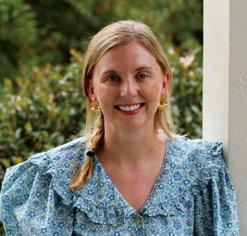
CATHERINE CURRIN / WRITER
Catherine Currin is a freelance writer and former associate editor at WALTER. By day, Currin works as a financial advisor at CAPTRUST. Born and raised in Raleigh, she is actively involved in her community and currently serves on the Young Professionals Board for the YMCA of the Triangle. Outside of work, Currin enjoys dining around Raleigh and spending time on the North Carolina coast. For this month’s issue, she wrote about Trophy’s newest venture, Bend Bar. “It’s always a delight to work with the Trophy team and highlight their newest space. They care so deeply about Raleigh and its community, and the intention and thoughtfulness they put into The Bend is no exception!”

A Raleigh-based photojournalist, Eamon can be found cycling around town and stopping to say hi to dogs. “Steph and Mario of Blue Cactus are like many in the Triangle’s music scene: crazy talented and yet supremely gracious. We spent the better part of two hours dodging flying insects and talking TV shows while watching the sky open up into a light show. An ideal summer evening in North Carolina.”

JOSHUA STEADMAN / PHOTOGRAPHER
As the son of a newspaperman and a teacher, Steadman inherited a love of learning and telling stories. He believes that both are used in equal measure to do what he does. A commercial and editorial diretor and photographer, his work has appeared in The Bitter Southerner, Our State and Salvation South. “Bottle collecting and intense art explorations were on tap for me this month. Connecting with the people I’m photographing is definitely the best part of my job. David and Anna were phenomenal and generous with their time. We even arranged a time to go back to Anna’s studio and take some archival photographs of the art on her walls.” Follow Steadman @steadyfilm
We love to hear from you!
“My husband and I thoroughly enjoyed the WALTER Book Club event with Jim Dodson. What a fascinating story he has to tell. I began the book when we returned home that night and can’t wait to travel the Great Wagon Road from Philadelphia to Georgia in the comfort of my armchair! This was my fourth Book Club event. As an avid lover of all things North Carolina, it was my favorite! Thank you for all the wonderful, varied experiences WALTER offers in addition to a great monthly magazine!”
— Mary Esther Baker

A reader made Josh Bellamy’s Tomato Tartines from our August 2023 issue.
“Making one of my favorite summer dinners that I learned from WALTER!”
Rebecca Necessary
“The boat house is by the late Spencer Wolf and is one of my favorite buildings.”
Frank Harmon, on “Soak Up the Fun”
“The only place I will eat a burger in Raleigh.”
Nithin Ganji, on “Meat Up”




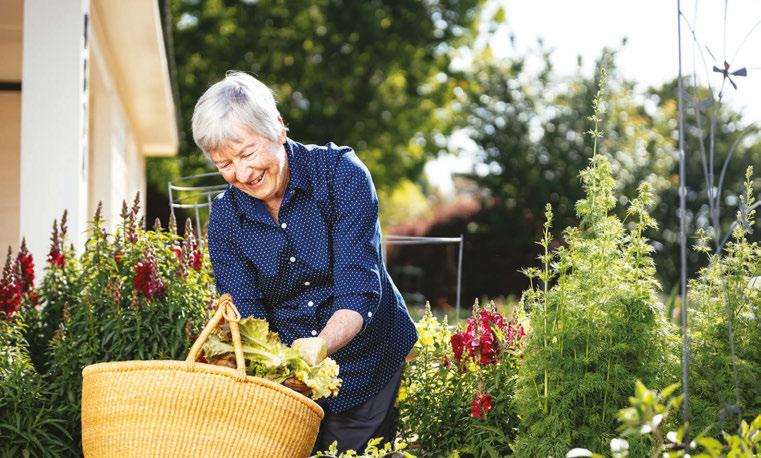


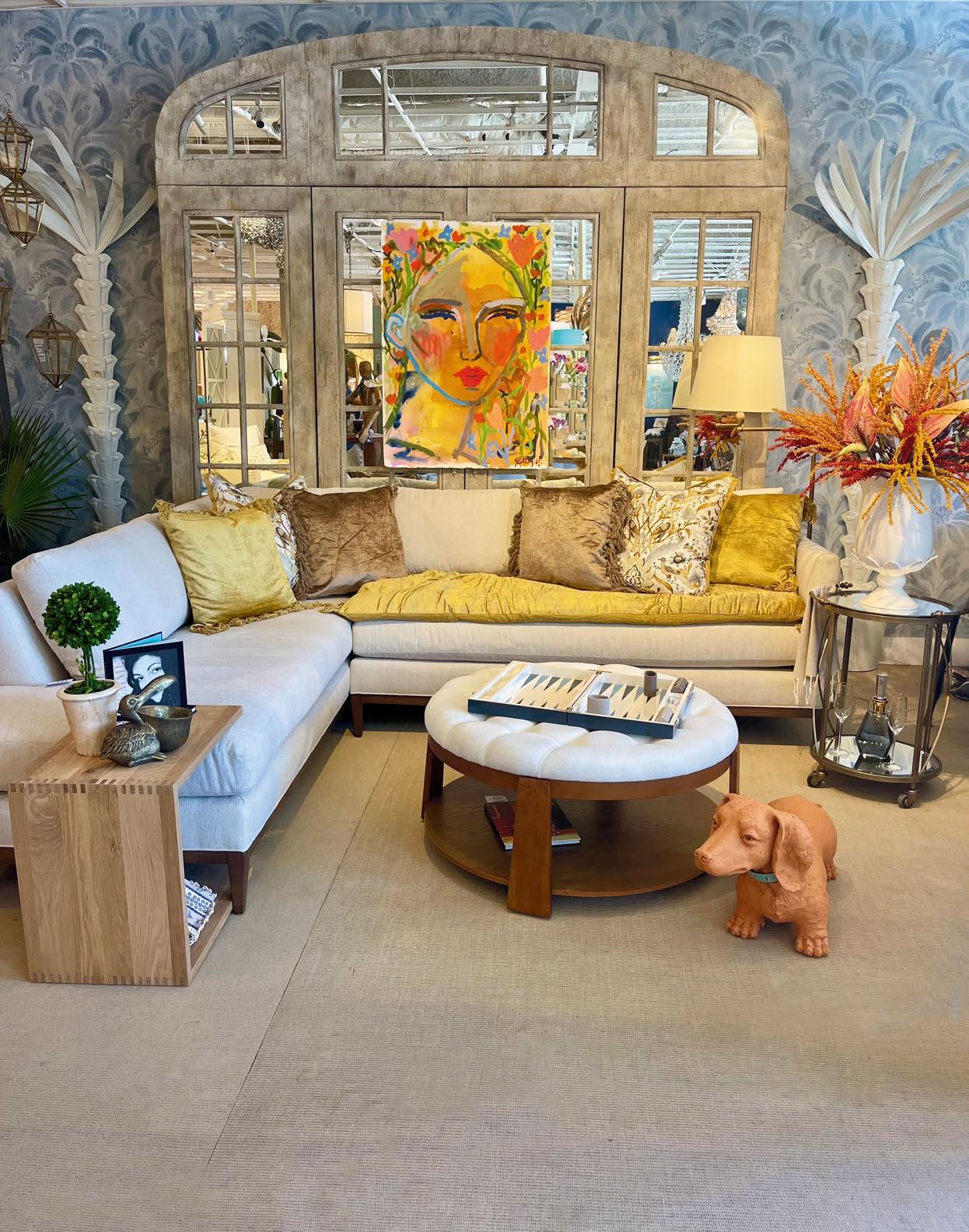
This month, enjoy the kickoff of fall festival and music season, community fundraisers and unique art gallery exhibitions.

HOP TO IT If you’ve yet to make a weekend out Hopscotch, our homegrown indie music fest, this year — its 15th — is the one to commit to. There’s something for everyone: reliable rockers My Morning Jacket and Superchunk, forward-thinking rappers like Earl Sweatshirt and Cavalier, cult classics like Sparks and Unwound, and budding stars like Crumb and Geese. In addition to the main stages at Moore Square and One City Plaza, the festival includes shows at club venues like Slim’s, Lincoln Theatre and The Pour House. That’s where you can hear artists like techno pop duo Kumo 99 or North Carolina’s own Americana darling, Fust ($181 for 3-day general admission; Sept. 4 - 6, downtown Raleigh; hopscotchmusicfest.com). Even if you don’t get a wristband, you can still get a taste of festival energy at the mostly free day parties, where emerging musicians show off their talents at local restaurants and bars. A few to consider: Sipsman’s Record Fair at Transfer Co. (Sept. 6; 12 - 5 p.m.; 500 E. Davie Street; transfercofoodhall.com), The Longleaf Lounge’s day party (Sept. 6; 1 - 5 p.m.; 300 N. Dawson Street; thelongleafhotel.com/lounge) or The Bend Bar’s day party (Sept. 5; 853 W. Morgan Street; trophybrewing.com/bend-bar). — Addie Ladner

by ADDIE LADNER


FANCY VS. FRUGAL
Sept. 4 | 6 - 7:30 p.m.
When it comes to wine, does a higher price always mean higher quality?
Westgate Wine Store has a class that invites you to reconsider that association and learn how to select the perfect bottle for your tastes. The class starts with a blind taste test. “We’ve tasted one of our top-selling $25 cabernets blind against wines like an $80 Caymus or a $85 Silver Oak, and often, more people liked the cabernet,” says Kayla Oelhafen, co-owner of Westgate Wine. “Some people like to guess which is ‘fancy’ and which is ‘frugal,’ but what we really want them to focus on is how to discern the nuances and flavor pro-


(BIĀN) / (BǏÀN) Sept. 1 - 28 | Various times
Known as hú-tu, artist duo huiyin zhou and Laura Dudu are also the founders of the Chinese Artists and Organizers Collective, a group that supports the Chinese diaspora through art and community programs. Their current installation, (biān) / (bǐàn), explores these two words, which share the same syllables in Chinese but differ in tone and meaning. Through media including photos, collage and writing, the two explore their heritage, friendship, memory and the question of what it means to be an immigrant in this country. “Now more than ever, we must make space for immigrant voices in our cultural institutions. This exhibition is a testament to the strength and complexity of immigrant experiences,” says Artspace president and CEO Carly Jones. “Laura and huiyin invite us to see migration not as a statistic or headline, but as a deeply human story.” Throughout the month, participate in events related to the exhibition such as a Text & Image Workshop (Sept. 20; 1- 4 p.m.) and an artist talk and closing reception (Sept. 27; 4 - 7 p.m.). Free; 201 E. Davie Street; artspacenc.org



files they’re attracted to.” Light bites will be available to purchase before or after the tasting. From $18; 6405 Westgate Road, #111; westgatewinestore.com

AND
BY
Sept. 4 - 30 | Various times Downtown art house Gallery C, which also serves as an agent for artists, has curated an exhibition celebrating its in-house talent. Gallery owner Charlene Newsome has selected two dozen eye-catching,
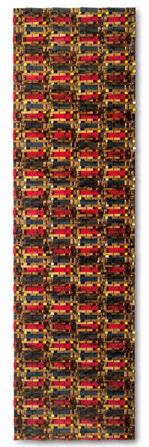
All information is accurate as of press time, but please check waltermagazine.com and the event websites for the latest updates.
Sept. 5 | 4 – 8:30 p.m.
WALTER’s signature speaker summit is back for its 10th anniversary!
WINnovation is an elegant evening celebrating women and innovation held at The Umstead Hotel & Spa. Enjoy professional and personal development workshops, networking, cocktails and a sit-down dinner while listening to keynote speakers as they share their personal stories. This year’s lineup includes Sara Abernethy, co-founder of Wye Hill Hospitality; Dallas Bonavita, executive director of Note in the Pocket; Pamela B. Cashwell, secretary of the NC Department of Natural and Cultural Resources; and Carly Jones, the president and CEO of Artspace. From $150; 100 Woodland Pond Drive; waltermagazine.com/winnovation

unique pieces from seven artists in her stable, including landscape and figure painter Al Gury, vibrant still-life Cuban artist Ana Guzman, mixed-media practitioner Chuck Rose and processoriented designer Davis Choun. Free; 540 N. Blount Street; galleryc.net
SIERRA FERRELL
Sept. 10 | 8 p.m.
Grammy-winning folk Americana artist Sierra Ferrell is making a stop at Red Hat Amphitheater on her Shoot for the Moon Tour. Expect to hear her latest single, “A Lesson in Leavin’” along with her tracks from her most recent album, Trail of Flowers, and earlier songs like “In Dreams” and “Made Like That.” Greenville, South Carolina, country artist Nikki Lane will be opening the

show. From $43; 500 S. McDowell Street; redhatamphitheater.com
Sept. 11 - 28 | Various times
Carolina Ballet is kicking off its 2025/2026 season with the classic and elegant ballet Raymonda Variations. Originally conceptualized by the famed
choreographer George Balanchine, the plotless ballet has two principal dancers, a man and a woman, and a troop of 12 women dancing with finesse to scores by Russian composer Alexander Glazunov. From $38; 2 E. South Street; carolinaballet.com

Sept. 12 - 28 | Various times
The audience decides the direction of this interactive family musical. In Mad Libs LIVE!, a group of teens are contestants on the popular television show Teen Superstars. Before hitting the stage on live TV, however, the teens find out their songs are missing words in the verses and chorus. It will be up to the crowd to help fill in the blanks and determine the songs they sing on television! From $20; 301 Pogue Street; raleighlittletheatre.org
Sept. 13 | 10 a.m. - 1 p.m.
Join the Friends of the City of Raleigh Museum in celebrating and awarding individuals and organizations who’ve had a significant impact on our community this past year at the Raleigh Hall of Fame Brunch and Reception. Part fundraiser, part awards ceremony, the event will feature brunch fare from Empire Eats, bloody marys and mimosas, with talks from civic leaders. Proceeds from the event go towards the continued work of the Friends of the City of Raleigh Museum, which supports the museum’s education, exhibits and community programming. $50; 220 Fayetteville Street; cityofraleighmuseum.org

Sept. 16 | 8 - 9:30 a.m.
Hear from the movers and shakers responsible for the Triangle’s cultural arts offerings at United Arts Council’s Coffee & Culture event. Held at Marbles Kids Museum’s Venture Hall, the morning includes performances by Enloe High School’s a cappella choir, breakfast and pastries from Pineapple Sol, remarks from arts leaders and the presentation of the United Arts Champion Award. From $35; 201 E. Hargett Street; unitedarts.org
Sept. 19 | 7 p.m.
In 2024, nearly 20,000 babies and toddlers received free diapers thanks to the dedicated work of the nonprofit Diaper Train. At Bottoms Up!, its annual fundraiser, learn about the essential work they are doing while enjoying North Carolina barbecue, live music, games and more. All the proceeds from the event go toward supporting families in our community. $75; 1812 Tillery Place; diapertrain.org
Sept. 19 | 7 p.m.
Immerse yourself in an evening of literature and fantasy at this transportive fundraising gala for the Redbud Writing Project, which offers free community writing classes for underrepresented or marginalized groups in the Triangle. Themed Romantasy (inspired by the genre that includes the wildly popular
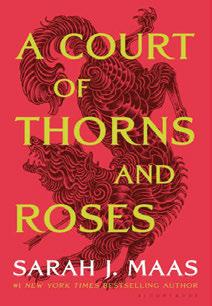
“A Court of Thorns and Roses” series by Sarah J. Maas), the event encourages you to grab your best period costume, fairy hair or crown for a night of readings, throne photo ops, themed food and drinks by Spread NC. Also enjoy a silent auction, which includes some stellar items like a flower arranging class, a night out with a literary agent, a group wine dinner at Coletta and a stay at The Umstead Hotel & Spa. From $60; 3915 Beryl Road; redbudwriting.org

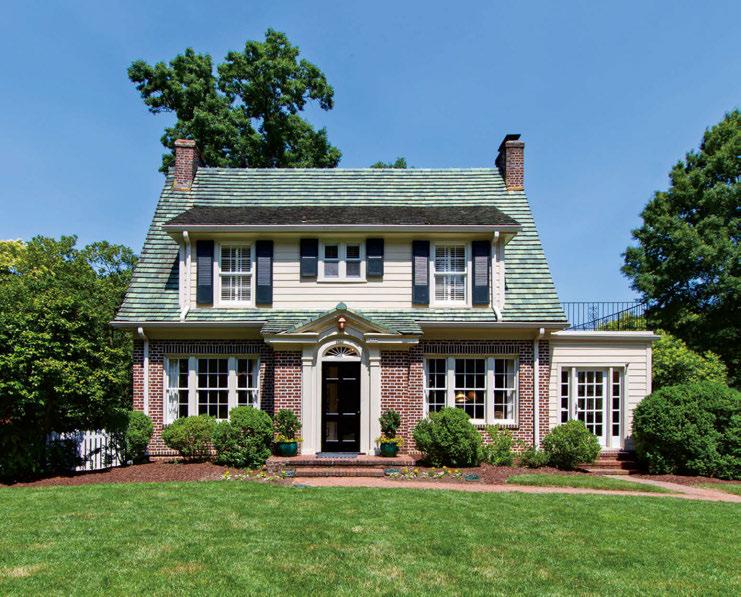
Sept. 13 | 8:30 a.m.
One of Raleigh’s beloved charity races is hosted by North Raleigh’s Sola Coffee Cafe. Held in honor of late owner Jeanne Luther, who passed from ALS, it attracts more than 1,000 runners and walkers to start at the coffee shop and weave through adjacent neighborhoods. To date, the race has generated almost $800,000 to aid the ALS community since it was started 12 years ago through donations to organizations like the Duke ALS Clinic, ALS TDI, Project ALS and NC ALS Association NC chapter. From $25; 7705 Lead Mine Road; solahotmini5k.com

Sept. 20 | 10 a.m. - 7 p.m.
It’s time for the largest celebration of arthropods in the United States! This year, the MVP is the krill, a shrimp-like crustacean found in marine habitats that’s best known for being the food source for ocean mammals like whales and seals. Throughout the day, see tons of insect demonstrations, enjoy handson activities, hear from vendors aiding our environment, sample some bugs at Cafe Insecta and more! Free; 11 W. Jones Street; naturalsciences.org






Sept. 20 | 10 a.m. - 7 p.m.
Travel the globe for a day at this free one-day international shopping and eating celebration at the NC State Fairgrounds. Enjoy live performances from dancing to singing, sample a range of different dishes — from sweet Italian gelato to spicy Jamaican jerk chicken — and peruse the bazaar, where you’ll find vendors selling jewelry, art, clothing, housewares, pantry items and more from all over the world. Free; 4285 Trinity Road; theinternationalfestival.org

Sept 20 - 21 | 10 a.m. - 4 p.m.
Contrary to the title, End Paper is actually an art book fair — and a chance to celebrate all things paper — at the North Carolina Museum of Art. From books to zines to stationery to art prints, shop new and timeless paper products, participate in workshops and more at this niche festival. Free; 2110 Blue Ridge Road; ncartmuseum.org








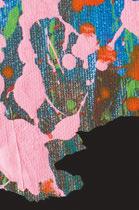







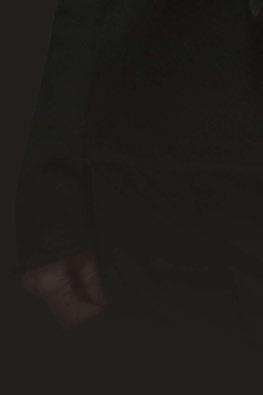




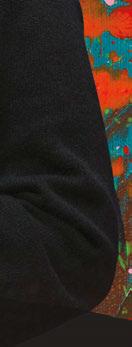

A luxury, rental life plan community, Hayes Barton Place offers residents exceptional amenities and an unparalleled lifestyle in one of Raleigh’s most sought-after locations. With more than 85% of our residences reserved, now is the time to discover the benefits of Hayes Barton Place.




Sept. 24 – Oct. 5 | Various times

This captivating one-woman show at Theatre Raleigh is sure to pull on your heartstrings. Husband-and-wife pair Jenny Giering and Sean Barry wrote this semi-autobiographical tale about a musical composer who receives a startling cancer diagnosis. What We Leave Behind explores how terminal illness affects those around us and poses questions about how to make the most of our time on earth and leave our mark once it’s over. Artistic director Eric Woodall is looking forward to showing off this new honest and emotional body of work. “It’s a stunning new musical and we are incredibly proud to have Broadway star Jessica Phillips — known for her powerful performances in Dear Evan Hansen, Next to Normal and Redwood — bringing the role of Jenny to life.”From $33; 6638 Old Wake Forest Road; theatreraleigh.com
FALL INTO GARDENING
Sept. 26 | 1 - 3:30 p.m.
Local horticulturist and foodscape pioneer Brie Arthur is leading a fall home-gardening workshop in the Ruby C. McSwain Education Center at the JC Raulston Arboretum. Learn how to make a seed tray and sow seeds, plus glean tips on a range of topics from watering, soil conditioning, seed handling and more to set yourself up for a bountiful backyard. $50; 4415 Beryl Road; jcra.ncsu.edu

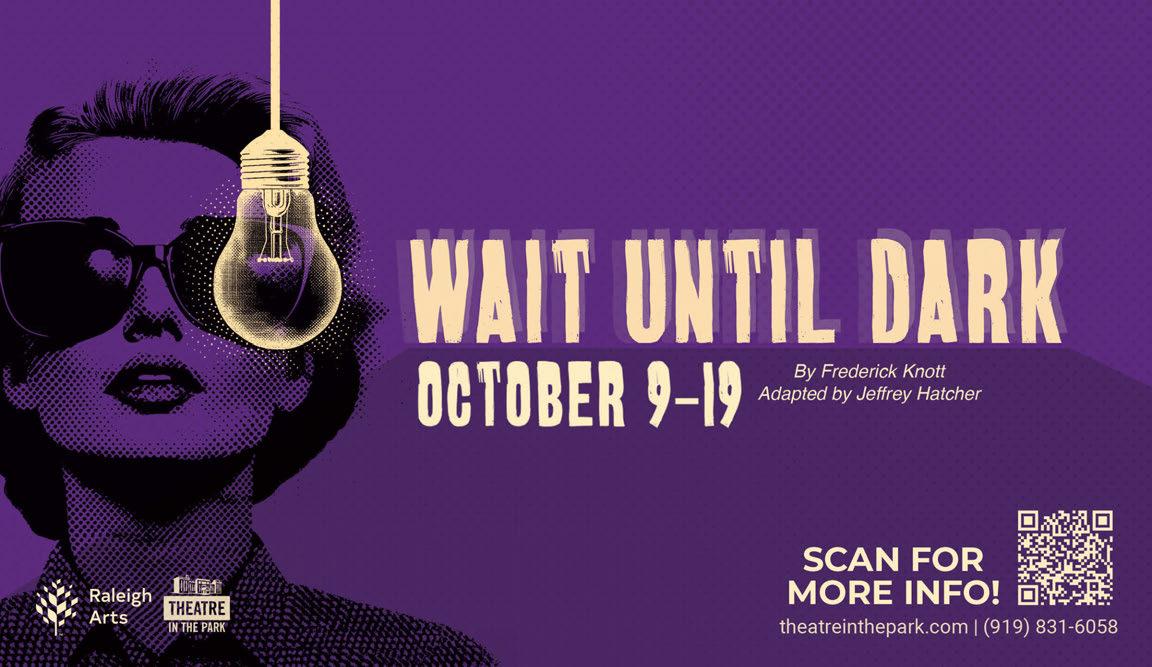


We’re excited to unveil The Clubhouse, the stunning centerpiece of our reimagined campus, featuring beautifully designed one-, two-, and three-bedroom penthouse residences. It’s senior living reimagined –where every detail is tailored to elevate your expectations.




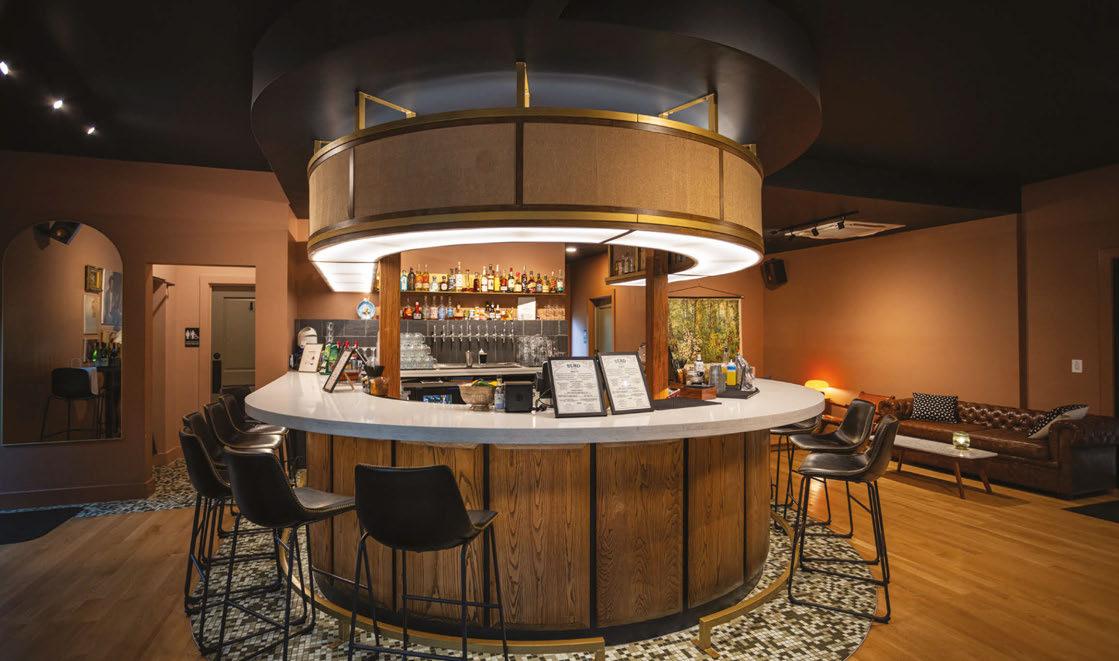
With the Bend Bar and a new State of Beer location, Raleigh’s homegrown brewers are revitalizing a stretch of W. Morgan Street
by CATHERINE CURRIN
photography by FORREST MASON
Raleighites may remember a trio of low-slung homes that sat vacant on a curvy stretch of W. Morgan Street.
Located just a few blocks from Trophy Brewing & Pizza, David Meeker, the brewery’s co-owner, and his team had their eye on them for years. “Obviously we know this area really well, and we knew about those three houses and admired them,” Meeker says. “So a little over a year ago, when the woman who owned them decided to sell, we were logical potential buyers.” Once they bought the property, Meeker, along with co-owner Chris Powers and partners David Lockwood and Les Stewart, felt it was important to keep the integrity of these homes. It’s an attitude toward commercial space that’s a bit of a novelty in a city where development often means tearing down the old to build new. “We wanted to preserve this little portion of Raleigh,” says Powers. “We chose to keep the character of that street, that special spot on the bend.”
The recently opened Bend Bar comes at a time of transition for the Trophy brand. The bar marks the brewery’s fourth spot, joining Trophy Brewing & Pizza just down the street, their Maywood location and State of Beer on Hillsborough Street. Their bar and restaurant Young Hearts Distilling on S. Wilmington Street closed its doors at the end of 2024, and its sandwich shop State of Beer on Hillsborough Street will have to vacate its space fairly soon due to a new development, “so we
were already thinking about what to do next,” Powers says. (In addition to the recent opening of The Bend, the Trophy team is also working on opening a location in Five Points, in the former Electric Supply Co. building near Ajja, later this year.)
Maurer Architecture’s Meredith Kirkpatrick and her team worked with Trophy on the renovation. While not designated as historic landmarks or architecturally significant, the houses were more than 100 years old. “We found a deed for the land that dated back to 1899,” she says. “These were quintessential Raleigh homes that we would have seen in the early 1900s.”
To make the homes better for hosting groups, Kirkpatrick connected them to each other and to the sprawling outdoor space surrounding them. “The deck was a big design feature,” she says. “The buildings themselves were pretty limited with their small footprints.” She opened up the interior floor plans, maintaining and enhancing the curb appeal of the exterior.
“These were quintessential Raleigh homes that we would have seen in the early 1900s.”
The Bend Bar anchors the new “campus,” as Powers calls it. Situated in the house furthest north on the property, the interior’s about the size of a residential living room, with a u-shaped bar just inside to draw guests in, plus a couple of seating areas with leather couches and community tables. Between all the light wood, retro paint colors and moody lighting, the overall impression is sort of a kitschy, moody living room. Outside, the large covered patio leads into a shady lawn dotted with picnic tables, groupings of chairs, fire pits and yard games. “We feel that we’re the type of group who can keep old houses and use them for commercial spaces — and make them work,” says Meeker.
MEREDITH KIRKPATRICK
“We peeled back layers and layers of the home’s history, and wanted to maintain the facade of the original homes. It’s commendable that this team really takes these challenges head-on, knowing that it’s not the easy road, but it’s worth it in the end,” says Kirkpatrick. “They’re up for doing this thing that is notably harder in a lot of ways than starting from scratch.”
While Trophy beer is always available, it’s not the focus at Bend — instead, there are rotating drafts and cans from other local breweries. There’s also an eclectic cocktail menu, with espresso martinis and a weird-sounding but refreshing Spicy Pickle Margarita. Powers says they want to cater to what their regulars are ordering. “We’ve leaned into the neighborhood vibe — for example, we always have Guinness on draft, which is new for us,” says Powers. He says the goal is to be “approachable from all fronts.” Connected by Bend’s “front porch,” State of Beer’s second location, which is in the middle house, opened in January and is a familiar expansion of the space on Hillsborough
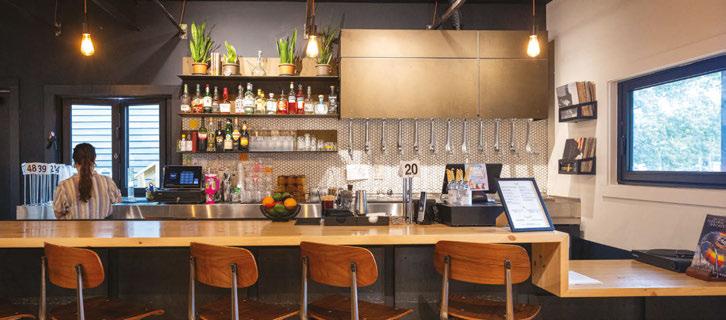
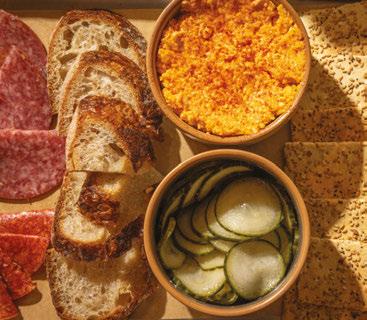

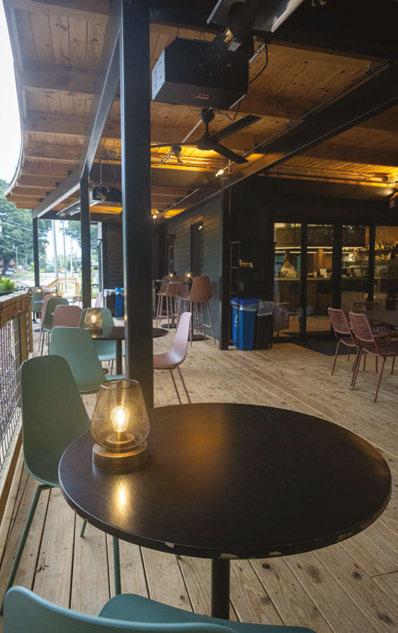



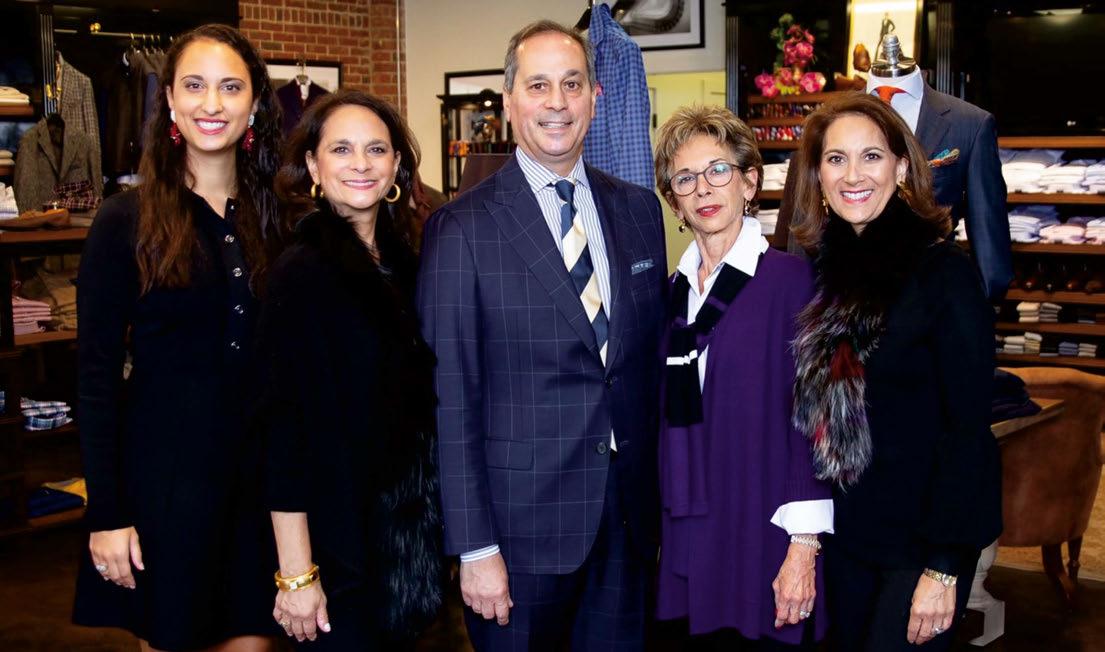

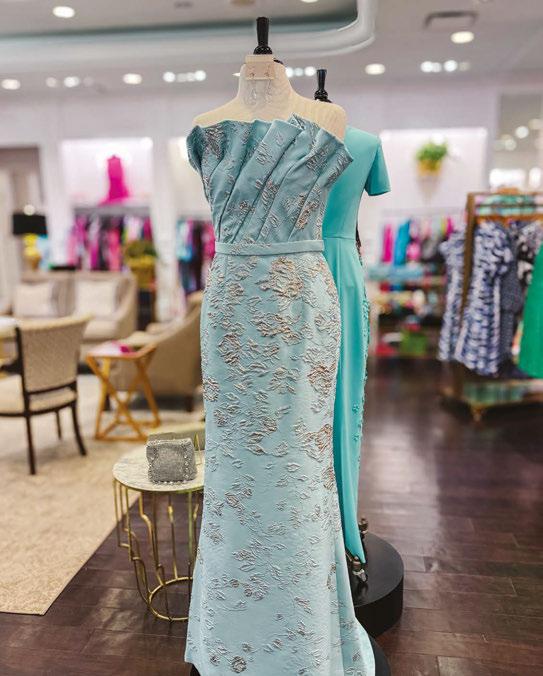
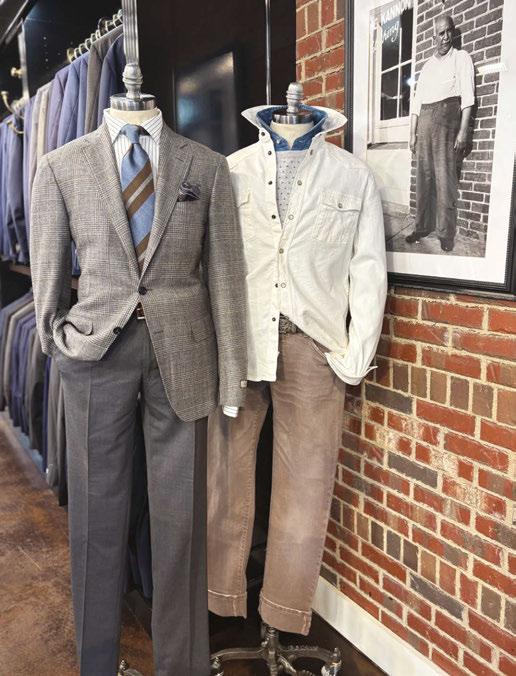

Texas cattlemen know bulls... but what about housing trends in Raleigh?
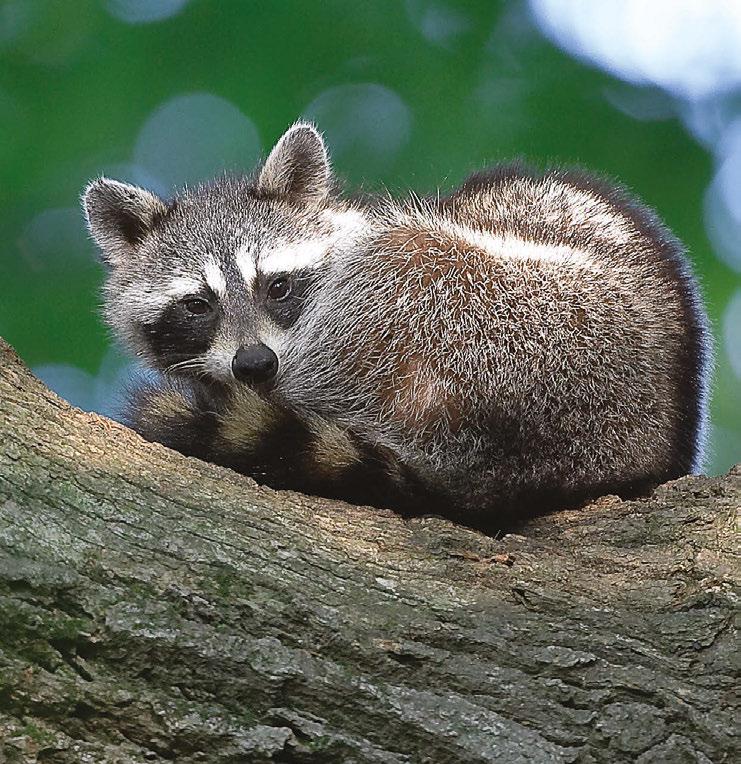
Raccoons are ubiquitous and curious creatures in the Piedmont
words and photography by
MIKE DUNN
Ihave several trail cameras on our property in Chatham County, and the three most common critters I see on them are gray squirrels, white-tailed deer and raccoons. The latter are mostly seen at night, although I do get an occasional dawn or dusk capture.
Raccoons are certainly one of the most easily recognized wild mammals. Distinguishing features include brownish-gray fur, a black mask across their face and a ringed tail. They weigh anywhere from 10 to 25 pounds as adults. Their longer hind legs give them
a noticeable hunched-over appearance when walking. Raccoons are widespread in our state and occur in both wild lands and urban areas. You may hear them at night making a variety of sounds, including hisses, screams and barks. These so-called masked bandits are intelligent and opportunistic creatures, to be sure, and they have extremely dexterous front paws similar to small hands. They use those long “fingers” to grasp and manipulate their food, and they can even open containers and unlock latches.
Raccoons frequent the edges of creeks and ponds searching for prey such as frogs, crayfish or other invertebrates. They also eat a lot of plant materials, especially fruits. Many people think that raccoons wash their food before eating, as you may see what looks like them rubbing their paws together underwater as they forage. But studies have shown that the bare skin on their front paws is extremely sensitive to touch and that being wet actually increases that nerve sensitivity, enabling a raccoon to better distinguish food items even in darkness. Their scientific name, Procyon lotor, refers to this behavior and means “before-dog washer” (raccoons were originally thought to be related to dogs). The common name is believed to be derived from an Algonquian word that means “he who scratches with his hands.”
My trail cameras often show raccoons using their front paws both in water and on dry land. In water, they will walk along feeling along the bottom and occasionally grabbing something and bringing it up to eat. On land, the cameras show them walking through the leaves, feeling for anything edible. They typically leave a meandering path of overturned leaves as a telltale sign of this practice.
We have a raccoon den located in a tree just outside our deer fence. It is situated in a large tulip poplar with a


hollow crevice going up the side about 10 feet and a couple of holes high up on the trunk. There is a cedar snag about 4 inches in diameter leaning up against the trunk, and when I put a camera on this tree, I was surprised to see that the raccoons almost always climb the cedar snag to get higher up on the tree rather than just climbing the tree trunk. At night, it becomes a busy cedar ladder with raccoons typically coming and going several times.
Early one summer, I was out in the yard and heard some squealing coming from that direction. I walked over and found two very tiny raccoons inside the hollow crevice of the tree. It turned out that the mother raccoon was moving her young to another den site down the slope and was carrying them one at a time — and the ones waiting their turn were not happy being left alone. This is typical behavior if the original den is disturbed or if she wants to get them to a den site closer to the ground as they start to mature and explore. I grabbed a couple of photos of the young and then scurried back to the house to let her
complete her moves.
The other place I regularly get raccoon footage is on a camera overlooking a couple of huge fallen trees over our wet-weather stream. Raccoons (and, in fact, many other animals) use such logs as forest highways and may cross them multiple times in a night. When walking through a woodland, I often keep an eye out for holes in trees, a hollow stump or
These so-called masked bandits are intelligent and opportunistic creatures, to be sure.
just big horizontal branches as raccoons use such areas as snoozing spots in the daytime. When I was doing educator workshops at the North Carolina Museum of Natural Sciences and we were traveling on refuge dirt roads in Eastern North Carolina, I always encouraged the participants to keep an eye out for sleeping raccoons. One teacher that had been to a few workshops asked if we ac-
tually ever saw any. I said yes — and, as if on cue, she spotted not one, but two raccoons sleeping on tree limbs within the next 5 minutes. I always loved it when the animals helped me out.
Our most recent raccoon encounter was while canoe camping in one of our favorite locations in our state, the Roanoke River. We set up camp on a platform surrounded by water and tupelo gum and bald cypress trees. Some of the gum trees had been cut decades ago and new trees had grown up out of the old stumps, creating a perfect bowl between the new trunks.
Melissa got out of the tent that morning and spotted the back of a curled-up raccoon in one of those tupelo gum “bowls,” just 30 feet from our platform. We watched it as we prepared breakfast. The raccoon occasionally would shift position and curl in tighter, tucking its head as if to say, “Can you guys be quiet? I’m trying to sleep here!” Eventually, the raccoon woke up, did some grooming, climbed down the tree and swam off into the swamp. Melissa mentioned that she thought she heard something scur-
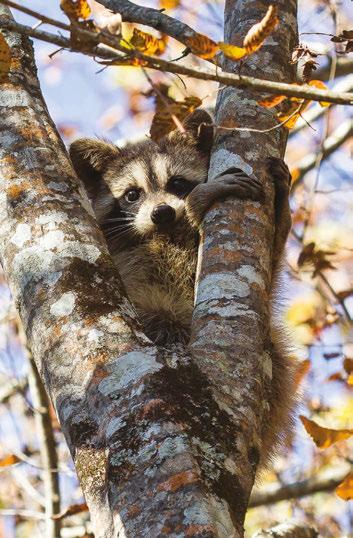
rying around on the platform during the night, but it appeared nothing had been disturbed, and we have never had any issues with critters on the platforms in all our years of camping here. But when we got home, I noticed a muddy paw print on our plastic tub of kitchen supplies, indicating that our furry friend had indeed paid us a visit. Fortunately, he wasn’t able to open anything!
While raccoons are extremely cute and interesting to watch, you don’t want to encourage them to lose their fear of humans and to become too comfortable around your home or camp. They can quickly learn to take advantage of any openings you provide and may raid garbage cans and pet food dishes left outside. They’ve even been known to come into houses through a doggie door! We have had a raccoon’s hand-like paw prints on our glass kitchen door a few times as they check out what’s going on in their neighborhood. So, please don’t feed raccoons, and let’s help these masked bandits stay wild.

Campbell
produces more judges than any other law school in North Carolina.
NORMAN ADRIAN WIGGINS SCHOOL OF LAW
Located in downtown Raleigh, Campbell Law School offers its students unmatched networking, externship, and learning opportunities that equip them with superb professional skills and prepare them for purposeful lives of leadership and service.

Our experienced faculty offers unique perspectives and expert instruction.
n Top-ranked advocacy program
n Dual-Degree offerings
n Full-time and part-time FLEX JD available
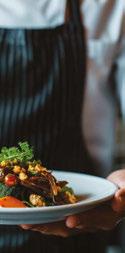



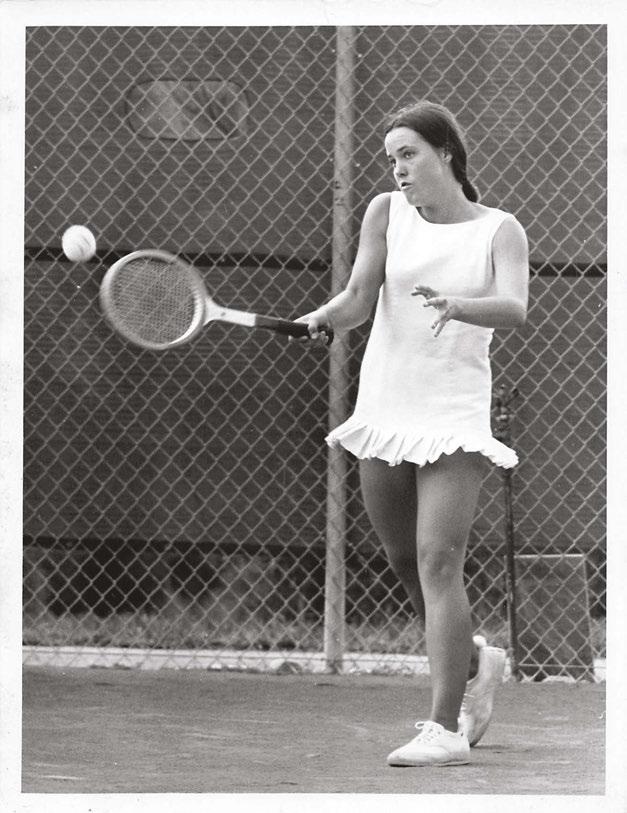
As a player and coach, Jane Preyer completed her Hall-of-Fame tennis career in 1991, but she’s never stopped serving.
Not long after the last match, she started pouring her energy into nonprofit endeavors. That competitive fervor she displayed on the court and spirit of generosity in the community could be traced back to her home, where faith, service and tennis were prioritized.
When Preyer wasn’t much taller than a wooden racquet, her mother Emily Harris Preyer made sure she and four siblings were on Greensboro’s public park courts and at First Presbyterian Church on Sundays. It was those early lessons from her mother and later training from teaching pro Dean Mathias that helped propel
Jane Preyer made a name for herself as a pro tennis player, then went on to do meaningful nonprofit work
by AJ CARR
Preyer on her skyward tennis trajectory.
“I got her late, and she was already good,” said Mathias, a former Wake Forest and Atlantic Coast Conference doubles champion. “She just needed confidence, a little direction and condition.”
But Preyer wasn’t always totally absorbed with tennis. When her father, Richardson Preyer, was appointed U.S. District Judge by President John F. Kennedy, the family moved to the Washington, D.C., area and she attended Chatham Hall in Virginia. There, she was a foursport athlete competing in basketball, field hockey, and lacrosse as well.
“I had a great time in team sports. It helped build my confidence. I think it’s great to have variety,” Preyer says, advocating for more young athletes today to
compete in multiple sports.
It wasn’t until after playing basketball and tennis her freshman year at University of North Carolina at Chapel Hill that she refocused solely on her first love. (Tennis was, after all, the ticket to a pro circuit packed with stars like Chris Evert and Martina Navratilova.) At UNC, Preyer won four state junior titles — three doubles, one single. She earned All-America honors and was team captain, and she was also a Phi Beta Kappa student.
After college, she turned pro and gained a No. 42 world ranking over six years. Preyer traveled alone on the tour, boldly competing in all the Grand Slams and smaller tournaments around the world. It was both an arduous and gratifying odyssey.
Highlights included wins over four Top Ten-ranked opponents, reaching the round of 16 at Wimbledon and pushing iconic Billie Jean King to three sets before losing in the Australian Open. But her “finest hour” she says, unfolded in Perth, Australia, where Preyer upset her sports “idol” — 14-time Grand Slam champion Evonne Goolagong — in front of a raucous Aussie crowd.
The night before what most thought would be a mismatch, Preyer, then 104th in the world, remembers phoning her mentor, Mathias. She shook him out of deep sleep at 3 a.m. U.S. time with a question: How do I beat Evonne Goolagong?
“Do not hit to her backhand. Keep hitting to her forehand and go to the net. Attack all the time,” Mathias advised. With a solid serve, judiciously placed approach shots and crisp volleys, Preyer implemented the Mathias game plan and won 6-3, 6-3 over one of her heros. Among her exuberant followers, none were more euphoric than her mother, who posted a giant sign in the front yard that read: Ding…Dong! Ding…Dong! Jane beat Goolagong!
“That was so embarrassing, but it was funny if you knew my mother,” Preyer says. There were other celebratory moments, such as when she and her mother teamed up and earned second place in a national mother-daughter tournament. The runner-up trophy — a silver tennis ball — sits on Preyer’s office desk today.
Highs and lows were part of the tennis journey. Losing to Barbara Potter in the fourth round at Wimbledon “still haunts me,” Preyer says. A loss to precocious 14-year-old Tracy Austin was another stinging setback. But whatever the outcome, Preyer maintained equanimity — humble in victory, gracious in defeat.
“Jane is the epitome of sportsmanship and character,” said USTA official Debbie Southern, quoted in a Southern Tennis press release. “She never put winning over integrity. Other players on the tour felt the same way. I can also attest to the sportsmanship and character she instilled in her Duke teams as I coached against her.”
In 1993, her pro career was short-cir-
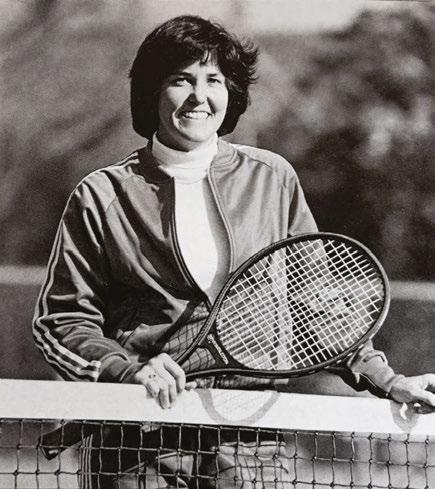

cuited by an elbow injury. Unable to play, Preyer quickly transitioned into coaching and guided Greensboro Page High to a state title in her only year directing the team. Then, much to the chagrin of UNC fans, she moved on to Duke University.
Going from Carolina stardom to rescue the Tar Heels’ biggest rival was tough. “I got a lot of grief for that — from both sides,” says Preyer. But she was resolute in transforming the Duke program to championship status. With scholarship support from then-Athletic Director Tom Butters, she recruited better players, created spirited team unity, coached with expertise, dominated the Atlantic Coast Conference and beat Carolina in every head-to-head match. She built a powerhouse women’s tennis program, going on to win four conference championships, four Coach of the Year awards and posting a 120-45 record in six seasons.
Her coaching, and particularly recruiting success, didn’t surprise Mathias. “She has a great personality, is so charming to everybody,” he says. “I can’t think of anybody not wanting to play for her.”
Today she stands tall in three halls of fame: North Carolina, Southern Tennis and the Guilford County HOF. Preyer also received the esteemed USTA and Intercollegiate Tennis Association Community Service Award presented by former
champions Arthur Ashe and Stan Smith during the 1990 U.S. Open.
While enjoying coaching, Preyer made the change in 1992 to a long, impactful career with nonprofits. As southeast director of the Environmental Defense Fund, she was instrumental in getting much-needed laws passed on pollution reduction, renewable energy and preferable paper usage. As a volunteer in health care, she saw how desperately families needed insurance and was passionate about getting coverage for them. Over time, she served on boards for the North Carolina Center for Nonprofits, Children’s Home Society of North Carolina, and UNC-Chapel Hill Institute for the Arts & Humanities.
In 2005, Preyer, along with siblings, started the Emily Harris Preyer Family Endownment at the North Carolina Tennis Foundation in honor of their mother. The nonprofit provides educational and sports opportunities for youth needing financial support.
Today Preyer still avidly watches tennis, plays a little golf and likes to go hiking. She stays busy with board positions on the National Health Law Program, EarthShare NC and Environmental Defense Fund, and she worships at First Presbyterian Church in Chapel Hill. Still active and still serving at age 71.









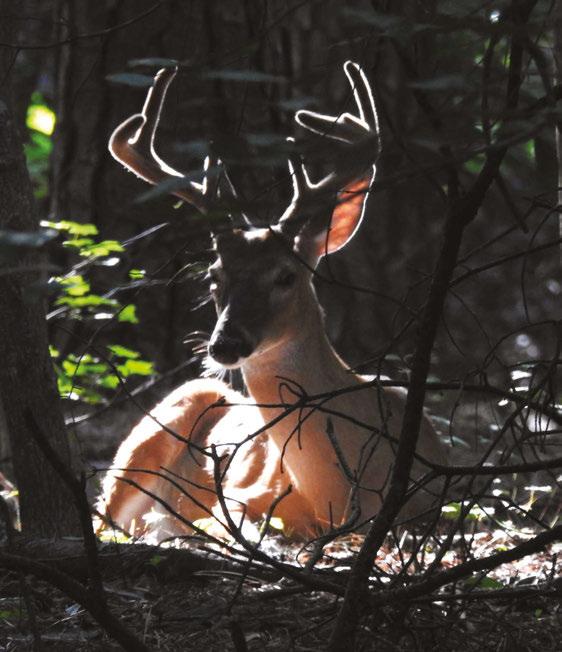

With its diversity of wildlife — including a heron rookery and nesting bald eagles — Shelley Lake inspires legions of avid fans
by SYLVIA ADCOCK photography by ELAINE PERKINSON
AKingfisher chatters above the water as it prepares to dive for a snack. A young buck with velvety antlers gazes from the underbrush. A Red-headed woodpecker hammers on a pine. And high above this symphony, Great Blue herons have built a colony of stick-studded nests in the trees.
The heron colony, called a rookery, is one of many natural attractions at Shelley Lake, a stone’s throw from the Beltline and just up the road from Crabtree Valley Mall. Surrounded by subdivisions and apartment complexes, it’s an urban park that has attracted a surprising diversity of wildlife, and with it, a diverse community of humans who find solace in the natural world.
There are brigades of moms with
strollers. Work-from-homers with earbuds. Lots of nature photographers lugging their long camera lenses. Serious runners and slow-walkers; native North Carolinians and newcomers alike. “There have been a few times when I have walked the park and not heard anyone speak English,” says Elaine Perkinson, who has been coming to Shelley Lake for more than 25 years. “But everyone understands hello and a smile.”
The lake was created in 1972, part of a project to control flooding in Crabtree Valley. The project created wetlands and marshy areas upstream of the dam, which brought a wide variety of wildlife to the space. Today, the park has 2 miles of paved trails and is one of the oldest sections of the city’s Greenway system.

It’s also among the most heavily traveled, with close to 900 average daily visitors.
Perkinson is one of the park’s biggest boosters and a moderator of the Facebook page Shelley Lake Park Fans, which offers updates on trail conditions, volunteer clean-ups and wildlife sightings.
The lake is a rich environment for the photographers. “There’s so much biodiversity in such a small place,” said Deja Perkins, an urban ecologist and founder of Naturally Wild, an environmental education concern. She’s identified upwards of 30 species of birds during her bird walks. “There’s a huge variety of woodpeckers, including Pileated and Red-headed woodpeckers,” she says. “Plus Eastern box turtles, and the number of deer is amazing! They get so close to you.”
The Great Blue heron rookery is one of the unusual sights that attracts photographers to Shelley Lake. “We’re used to seeing herons hunting or fishing, but not nesting,” Perkins says. To find the nests, she suggests looking for a lot of white splatter, Jackson Pollock-style, at the base of a tall tree, then look up. Several nests up to 4 feet wide may be found in
a single tree. If the foliage is too dense to see them, you still might hear them, at least during nesting season. “The nestlings will clack their beaks together when the parents get near with food,” Perkins says. “And you’ll hear these almost prehistoric sounds, screeching, guttural and throaty.”
Another big draw is a pair of Bald eagles that have been nesting at Shelley Lake since 2018. The nest is visible from the trail, and spectators can see both parents bring food — maybe a fish or a squirrel — to feed the eaglets. Once they fledge, the juvenile eagles, which are similar in size to their parents but without the trademark white head, can often be seen perching near the nest tree.
The Facebook page keeps followers up to date on the eagles, who start bringing sticks to their nest in the fall, and provides information on unusual bird sightings. Sometimes there’s good news to share, like the sighting of a doe with a newborn fawn; other times the news is more somber, like noticing the number of ducklings decreasing over the spring as the laws of nature take over.
There are two parking areas, both on Millbrook Road. The largest is at the Sertoma Arts Center (1400 W. Millbrook Road) and the other lot is about a half mile east on Millbrook (1140 W. Millbrook Road). The Sertoma entrance will put you on the west side of the lake; the other entrance will put you on the east side.
The eagles’ nest is on the east side. There is a sign near the trail letting you know you’re near an active eagles’ nest. The heron rookery is on the west side, but can be seen across the lake from the east side trails. Both the eagles and herons start building or fortifying their huge nests in the fall, so bring binoculars and watch for large birds carrying sticks.
Sometimes, the animals become characters in their own right. For many years, a Pekin duck named Duchess lived at the lake. “Duchess was very special because she really loved people,” Perkinson says. “She would swim up and start talking as soon as anyone called for her.” In April 2021, one of Perkinson’s friends discovered Duchess beneath a bridge, likely killed by a coyote or a snapping turtle. Perkinson and her friends buried her nearby and later raised money for a park bench in her honor. (Its plaque reads, “Our Special Pekin Duck — Beauty, Talker and Flirt!”)
On a recent summer day, not far from Duchess’ bench, Humberto Barba of Raleigh had his camera lens trained on a heron standing on a piling. He comes often to photograph wildlife, he says, “just watching to see what will show up.” Nearby, a set of ducklings retreated to the shade and turtles broke the surface of the water while the foot traffic continued.
“The cool thing about Shelley,” Perkinson says, “is you can see something different every day.”

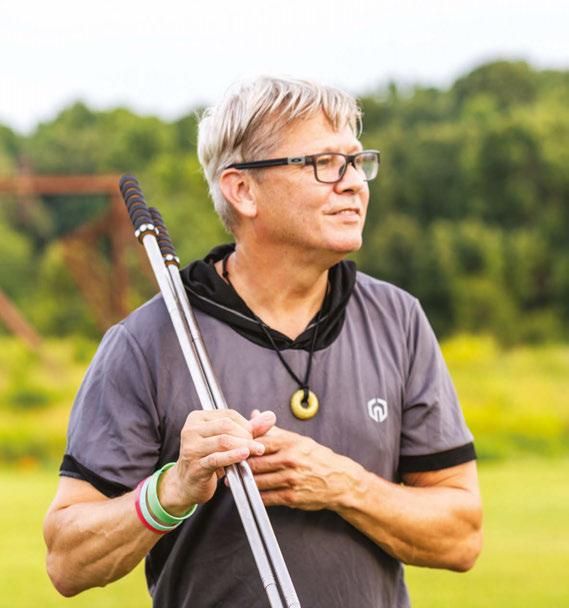

Ken Thomas has perfected the art of these intriguing orbs — and spreads joy all over Raleigh
as told to LEXI AMEDIO photography by BRYAN REGAN
If you’ve ever been to the North Carolina Museum of Art and seen giant bubbles floating in the air — or heard the joyful squeals of children chasing them — you’ve most likely encountered the handiwork of Ken Thomas. Known as the Raleigh Bubble Man, for the last decade Thomas has been frequenting local parks, creating intricate bubble shows. A native North Carolinian and alumnus of North Carolina State University, by day he works in engineering, but evenings and weekends are reserved for building his own bubble-making tools and sharing his hobby with others.
HOW DID YOU GET INTERESTED IN BUBBLES?
It started with a crush on someone at Run Club. I found out they had never seen The Princess Bride, and there was a showing of it at a school near Garner. This was maybe 14, 15 years ago. It turned out to be one of my favorite first dates because not only was there a great food truck and a beer truck and an awesome movie, but there was a guy with an industrial-powered bubble maker filling up the football field with bubbles. She took a picture of me drinking a beer. In the entire frame are bubbles and I was wear-
ing one of my favorite running T-shirts. It was one of my favorite pictures for the longest time, and I always associated bubbles with that moment.
After that, I started buying various bubble things and doing bubbles at sunset. And once friends and family find out you like something, every holiday becomes easy. So I got lots of bubble presents for birthdays and Christmas and whatnot. And then during COVID, I started making my own bubble equipment, since pretty much everything else in my life stopped. That was it. So I was going every day to make bubbles. Now it’s usually
every other day or sometimes two, three times a week.
ARE ALL OF YOUR BUBBLE SHOWS THE SAME, OR DO YOU DIFFERENTIATE WHAT YOU DO DEPENDING ON THE EVENT OR THE NUMBER OF PEOPLE IN THE AUDIENCE?
It’s still evolving a little bit. I make new and different ones every so often. I’ve got a design I’m working on right now, which is going to be the biggest wand I’ve ever made. I have some industrial poles that are super strong. On occasion, I will enlist people to help me make bubbles. I usually don’t do that with little people because things can go crazy real quick. But if there are some bigger kids or people my age, I have a bunch of wands. More bubbles is more happy.
Occasionally I try to do photography. I will chase the bubbles with my camera and try to catch them. And it’s a whole lot easier if I can get someone to take the pictures for me or have someone make the bubbles so I can take the pictures. If I’m at an event, I’ll do as many bubbles as possible, take breaks here and there. But I’m starting to slow down a little bit. So if I’m out at a park, instead of making nonstop bubbles for four hours, I’ll just make a few, take a break, make some more, take a break. I’ve been taking my hammock to the North Carolina Museum of Art, so I’ll set that up, then make some bubbles, then put it away to go relax — read something, listen to some music — then go back.
WHAT’S YOUR FAVORITE PLACE TO MAKE BUBBLES?
Definitely the NCMA. All of the people that work there are so awesome, and I go there pretty often. It’s the biggest, most open place, with lots of great backgrounds. Or the Lake Dam Road at Lake Johnson; I’ve made bubbles there the longest. Dix Park is nice, Moore Square is really nice, too.
WHO WATCHES THE BUBBLES?
It’s mostly kids, but a little bit of everyone. On occasion, it’s just me. My favorite time to make bubbles is right after a

thunderstorm, when it’s just me doing the art stuff, and I take some photos. It’s extremely therapeutic to make them, watch them and pop them.
HOW HAS MAKING BUBBLES AFFECTED YOU AS A PERSON?
There are some scientific studies that if you do something nice for other people, and then if someone does something nice for you, it boosts your immune response. Even if someone is just watching and they’re not involved at all, they get a boost to their health. It’s a good way to help spread some happiness. I love it when little people say, This is the best day of my entire life! — that’s pretty awesome. As grownups, we’re not so open to saying when we think something is that awesome. But little people will.
DO YOU MAKE BUBBLES AS A JOB?
When I retire, I may travel more and do this as a business. But for now, it’s
almost no money made. At first, I adamantly refused to let people give me any money. Now I’m way more laid back about that — if I do an event or a party, I tell people just to surprise me after and that it’s optional. But sometimes when you do something for money, it changes. When people pay you for something, they have all these expectations. I just enjoy doing it. And if things go wrong, there’s no moneyback guarantee.
DO YOU HAVE A CALENDAR OR SOME WAY PEOPLE SEE WHERE YOU’RE GOING TO BE?
No, it’s usually, how tired am I from the workday? What’s the weather look like? Is my spider sense telling me the sunset’s going to be good? When I’m hired for an event, I try to warn people that I don’t have an assistant or a webpage, it’s just me and my calendar. I’ve gone to the wrong party before. Basically, people ask me to do stuff and if I’m not too busy, I try to say yes.



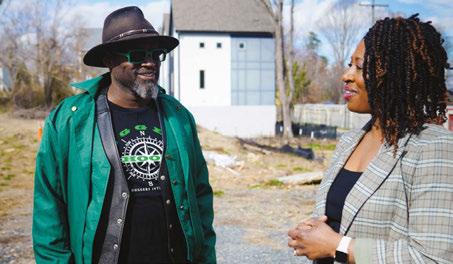















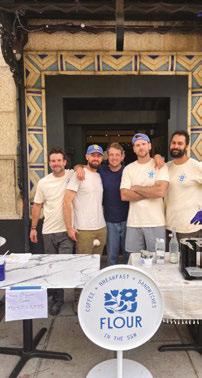










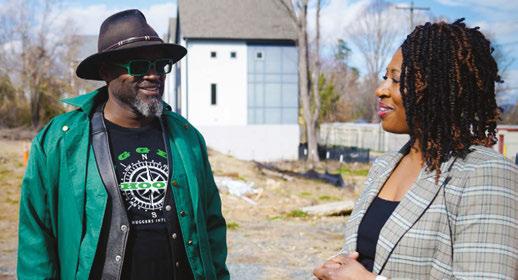



Recovery doesn’t happen overnight. That’s why PBS North Carolina continues to spotlight communities in western NC as they rebuild and welcome back visitors after Hurricane Helene. Through every milestone and challenge, PBS North Carolina is there to hear their stories, celebrate their progress and keep everyone connected.
Because that’s what neighbors do.


Explore our western NC stories at pbsnc.org/hurricane-helene.

by Liz
September arrives with cooler temperatures and lower humidity, bringing a sense of excitement, if for no reason other than that it is bearable to be outside again! As I continue to harvest an abundance of figs, tomatoes and eggplant, I am thankful for our long growing season. Fall is my favorite season — until spring comes around — and I want to enjoy every minute of it! — Helen Yoest
If you’re a seasoned gardener, take a stroll to observe what thrived or what struggled to adjust for next year. If you are new to gardening, now is an ideal time to start new garden beds, as this gives new plantings time enough to establish roots before winter. Choose a sunny spot in your yard, then plant some easy fall edibles like arugula, parsley and kale. If your soil is too hard to work with, consider a raised bed. These beds can be as simple as a mound of purchased garden soil, but it’s best edged with wood, rocks or prefabricated metal beds.
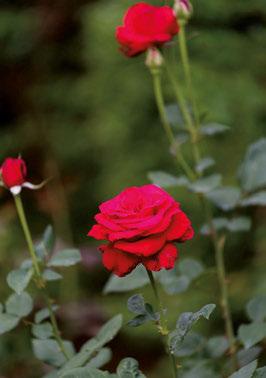
Prepare for October through December harvests by directsowing seeds for veggies like beans, carrots, cilantro, dill, peas and turnips by the middle of the month. (I prefer seeds to transplants this time of year, there’s more variety and they’re less expensive.) Follow packet instructions, which will tell you the planting depth and spacing requirements and best time to sow. Make sure your seeds get daily water, and if your seedlings start to look crowded, thin them out by removing a few so they have room to grow.
Hybrid tea roses continue to bloom (even brighter as heat stress subsides!) and now is the ideal time to prepare for a healthy transition into winter. Water weekly and deeply, and stop deadheading so the roses can develop hips, which will signal the plant to slow down. Mulch around each bush to insulate roots and keep the plants from heaving in freezing conditions. As long as your roses are thriving, add a systemic product (like BioAdvanced All-in-one Rose and Flower Care) to fertilize, prevent blackspot and powdery mildew, and aid in insect control.


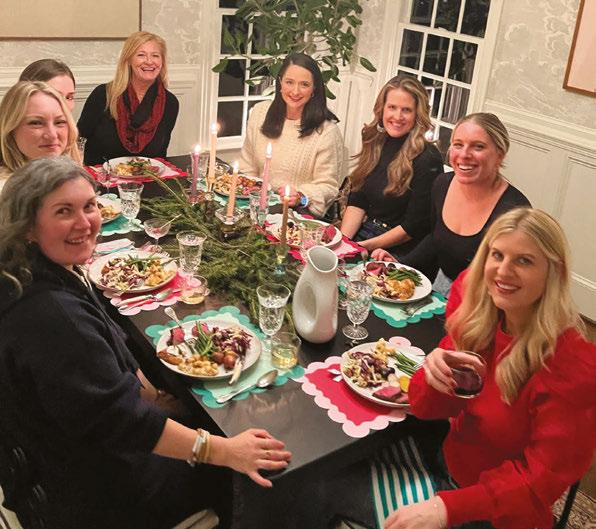


by MOLLY SCHONEVELD
When I moved back to North Carolina two years ago after 23 years in Los Angeles, I expected a little bit of culture shock. I had grown up in Albemarle, after all, but hadn’t actually lived in the South since I graduated from the University of North Carolina Greensboro in 1999. That summer, my dad and I drove across the country — all 2,437 miles — to drop me off at a house in Studio City, where I’d be living with the daughter of my mom’s friend and her actress roommate. I’d only met them once before, on a quick scouting trip over spring break.
Aside from the guilt I had knowing that I broke both my parents’ hearts as their only child moving that far away, that first day in Los Angeles was one of the best days of my life. I was living my
dream! Much to my family’s dismay, I did not come home after a few months. Instead, I spent decades building a life on the West Coast.
Though I now feel like an Angeleno in many ways, North Carolina never leaves you. I gravitated toward other Southerners who’d moved there around the same time. We spoke the same language — we said y’all and called our mamas — and ate pimento cheese and biscuits, foods that seemed foreign in a place known for sushi and Chinese chicken salads. I met my (non-Southern) husband at church in Los Angeles, and we built a life together.
But during the pandemic, we decided our tenure out West was done. We needed to be closer to our parents at this time in their lives. So we packed up our
tiny townhouse, the one we saved for years to buy, and bought a much larger house in Raleigh. We were starting over, but no longer as 20-somethings with nothing to lose.
My husband and I both work from home, and we don’t have kids, so that meant we were missing the most common ways people build community: water-cooler banter and school sports. I kept asking myself the same question: How do you find your people as a grown-up in a new place?
It was a friend who had gone through a similar transition, moving from Los Angeles to Denver, who challenged me. What are you willing to do, she asked, to get the community you say you want?
That question inspired me to come up with an action plan. After all, I was
pretty sure friends weren’t just going to magically appear at our door. (Other than our neighbors, who actually did — and whom I can never repay for the hospitality they’ve shown us.)
I thought about it. I’ve always loved cooking for people. In my 20s, I would pile a million friends in my apartment on Sunday nights and feed them like I was the dorm mother, trying out recipes like my godmother’s seafood chowder or stuffed pasta shells. After we got married, my husband and I would entertain for special occasions, like Friendsgiving, but space was always an issue for hosting a group.
But here in Raleigh, we have space! We have an actual dining room where I can seat 10 people comfortably and a huge kitchen island where we can chat over food prep.
So, inspired by a cookbook club that another friend had started years ago, I decided to start my own. It’s sort of like a book club, but you read a cookbook, and when you meet up, everyone brings a dish. Not only is it a great way to try multiple recipes from the same book, but it’s also an easy way to entertain, since it’s basically a potluck. (No need to even put out hors d’oeuvres, because someone is bringing those!) Around the table, you talk about what you liked in the book, which recipes didn’t quite work, what you’d make again, etc. — instant icebreaker.
But first, of course, I needed some members.
I decided to tr y inviting a women’s coffee group that I’d joined when we first moved here. I’d only gone a few times, and barely knew most of the people, but I sent the text anyway. To my surprise and delight, folks were interested! A month later, I found 10 amazing women around my table, some of whom I’d never even met.
For the first dinner, I chose a cookbook called Big Night by Katherine Lewin that was getting a lot of press at the time. One woman brought wine from her family’s vineyard along with Lewin’s Big Chopped Salad; another brought
Sabzi Polo with Tahdig (a Persian herb rice with a crispy bottom that looks really fancy and tastes even better). Someone else, with tons of ambition, made the Bulgogi-ish Lettuce Wraps, all professionally displayed on a huge wooden cutting board. It was really fun because many of us shared photos of what we were making ahead of the party, so it got everyone excited for the big spread we were about to have. We learned that while some of the harder dishes were delicious, you can’t go wrong with deviled eggs and a green onion dip (also in the book).
Since then, we’ve cooked from Ina Garten’s Go-To Dinners, where I made her Grilled Porterhouse Steak with Rosemary and Fennel (you can’t believe how easy and impressive it is!) and I introduced the group to my favorite London chef, Yotam Ottolenghi, through Ottolenghi Simple (the safest way to start with his recipes, which can be intense with a million ingredients). The Watermelon Salad with Green Tahini Sauce was a standout — so good, in fact, my friend Thea made it again at a later dinner party. Though we loved everything from the Spinach and Gorgonzola Stuffed Jacket Potatoes to the Shrimp and Corn Fritters, everyone raved over the Vanilla Custard with Roasted Strawberries and Rhubarb for dessert.
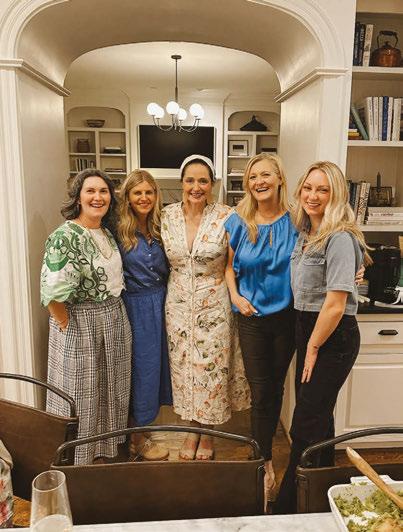
free dinner party that’s also an education in trying something new in the kitchen. Over the last year of having our cookbook club, I think we would all agree that more complicated cooking doesn’t always mean more enjoyable. Simple dishes made with fresh, in-season ingredients almost always steal the show.
I’ve also learned to let go a little — to focus less on the presentation (though I did make a signature cocktail for the first one) and more on the experience; to make sure I’m actually relaxed when guests walk through the door.
Going out to dinner is lovely, but when you’re in someone’s home, there’s an intimacy that helps you get to know someone on a deeper level. What candle do they have burning? What’s on the playlist? Are they cloth-napkin people? These details tell you what they value, how they want you to feel and even how they see themselves. It’s a kind of unspoken storytelling that opens the door to vulnerability, generosity and real connection.
What began as a casual idea has become a bimonthly ritual, a stress-
But I’ve also learned that the real secret ingredient to these dinners is not what’s on the table — it’s who’s around it. Over the past year, the cookbook club has allowed me to connect with a group of entrepreneurial, curious, whip-smart women who are doing all the things and still making time for each other. We talk about work, motherhood (or not), burnout and ambition. We trade ideas, referrals and, of course, leftovers.
Just as I’d hoped, this cookbook club built something I very much needed: a circle of women who are becoming my new tribe here in Raleigh.
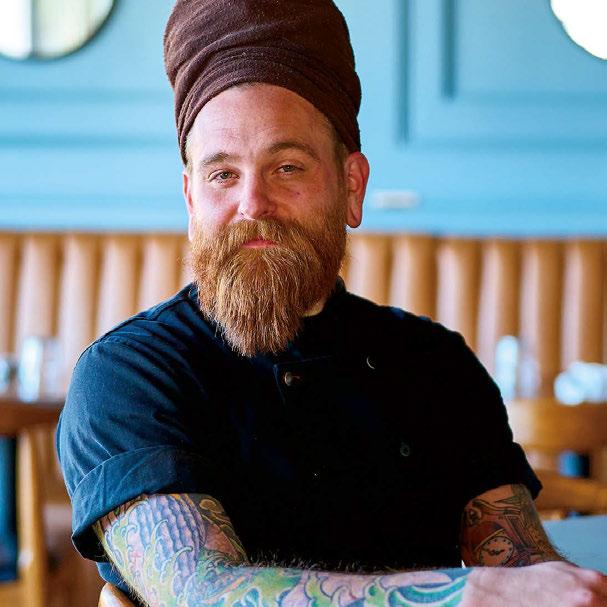
OCTOBER 22 | 6 PM




Join us for a farm-to-table dinner honoring the outdoors. Enjoy an exclusive menu at this sit-down meal, plus a fun cocktail hour, music and more!
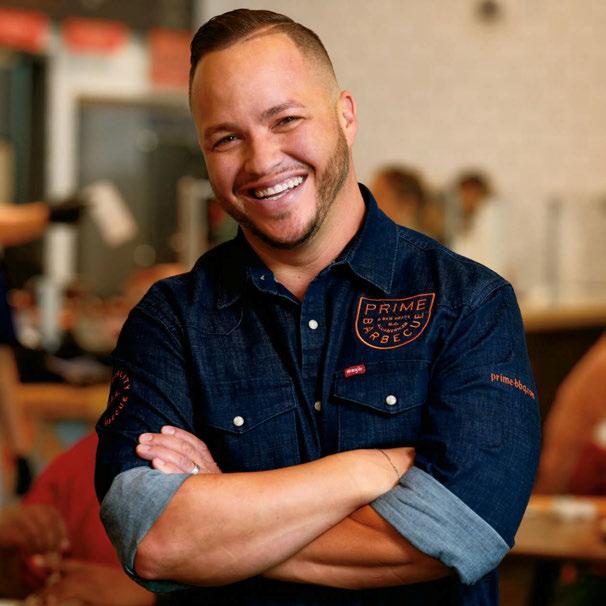


by JIM DODSON illustration by GERRY O’NEILL

September may be the ultimate month of change.
As summer’s lease runs out, the garden fades. The days become noticeably shorter and sometimes even cooler, hinting at autumn on the doorstep. After Labor Day, summer’s farewell gig, the days bring new schedules and an accelerated pace of life.
Just down the street, a dear neighbor’s firstborn is settling into her dorm at Pennsylvania State University. Her mom admits to having tender emotions over this rite of passage.
I know the feeling well. I remember driving my children to their respective universities in Vermont and North Carolina, sharing stories with their mother about their growing up on the way. We marveled that time had passed so quickly.
Without question, dropping my kids off at college was a ritual of parting that stirred both pride and emotion.
On a funnier note, September’s arrival reminds me of my own unexpected journey to East Carolina University half a century ago. On a blazing afternoon, my folks dropped me off at Aycock dorm, now Legacy Hall, with my bicycle, a new window fan and $50 for the university food plan.
Not surprisingly, my mom hugged and kissed me, and wiped away a tiny tear. My dad merely smiled and wished me good luck. He also looked visibly relieved. “You made the right decision, son,” he said. “I think you’ll really enjoy it here.”
The previous winter, you see, I fell hard for a beautiful French exchange student at my high school named Francoise Roux.
During the last few weeks before she headed home to France, we had a twoweek courtship that included long walks and deep conversations about life, love and the future.
I was too nervous to kiss her. Instead, on the last night before she flew away, sitting together by a lake in a park, I played her a traditional French lullaby on my guitar, an ancient song her father sang to her when she was little. During the drive back to her host’s residence, we even discussed the crazy idea that, when I graduated in the spring, I might forego college in America for the time being in favor of finding a newspaper job in France so we could stay together.
As we said goodbye under the porch light, she leaned forward and gave me our first — and last — kiss.
It was a sweet but improbable dream. Yet, having won Greensboro’s annual O. Henry Writing Award the previous spring — and having consumed far too much Ernest Hemingway for my own good — I decided to skip applying to college and seek a job in Paris. Touting my “major” writing award and one full summer internship at my hometown newspaper, I brazenly applied for a job as a stringer for the International Herald Tribune’s Paris bureau.
Amazingly, I never heard back from the famous newspaper.
Come mid-May, still waiting for a reply, I was having lunch with my dad at his favorite deli when he casually wondered why “we” hadn’t yet heard from the four colleges I’d applied to for admission.
“Actually, Dad,” I said, “I didn’t apply to them. I have a better plan in mind.”
I sketched out my grand scheme to spend a year working in Paris, where I would cover important news stories and gain valuable life experience in the City of Lights — the same city Hemingway fell in love with during the last days of World War II. I mentioned that I was waiting for a job offer from the International Herald Tribune.
He listened politely and smiled. At least he didn’t laugh out loud. He was an ad man with a poet’s heart.
“This wouldn’t have anything to do with a certain pretty French girl named Francoise, would it?”
“Not really,” I said. “Well, a little bit.”
He nodded, evidently understanding. “Unfortunately, you will have to get a draft number this September. And if you get a low number and aren’t in a college somewhere, you might well be drafted. That will break your mother’s heart. How about this idea?”
He suggested that I simply get admitted to a college somewhere — anywhere — until we could see how things panned out with the draft. There were rumors that Nixon might soon end it. Until then, a college deferment would keep me from going to Vietnam.
Reluctantly, I took his advice and applied to several top universities. None
had room for me, though UNC-Chapel Hill said I could apply for the spring term. Too late to be of use.
On a lark at the end of May, my buddy Virgil Hudson said he was going down to East Carolina University for an orientation weekend and invited me to tag along. I’d never been east of Raleigh. On our way into Greenville that beautiful spring afternoon, we passed the Kappa Alpha fraternity house, where a lively keg party was happening on the lawn. I’d never seen more beautiful girls in my life. Young love, as sages warn, is both fickle and fleeting.
“Hey, Virge,” I said, “could you drop me off at the admissions office?”
The office was about to close, but the kind admissions director allowed me to phone my guidance counselor back home and have my transcripts faxed. I filled out the form and paid the $30 admission fee on the spot.
By some miracle I still can’t fathom, ECU took me in.
The first thing I did on the September morning before classes got underway was get on my bike and ride due east toward New Bern. As a son of the western hills, I simply wanted to see what this new, green countryside looked like.
The land was flat as a pancake, and the old highway wound through beautiful farm fields and dense pine forests. A couple of hours later, I stopped at a roadside produce stand to buy a peach and had a nice conversation with an older farming couple who’d been married since the Great Depression.

I had no idea how far I’d pedaled. “Why, sonny, you only have 10 more miles to New Bern,” the old gent told me with a soft cackle. I got back to my dorm room after dusk — having fallen in a different sort of love.
There was something about this vast, green land with its rich, black soil and friendly people that quietly took hold of my heart.
My freshman year turned out to be a joy. My professors were terrific, and my new friend and future roommate was a lanky country kid from Watts Crossroads, wherever the hell that was. His name was Hugh Kluttz.
We are best friends to this day.
Having “gone east and fallen in love,” as my mother liked to tell her chums at church, I became features editor of the school newspaper — artfully named THe Fountainhead — where I wrote a silly column that undoubtedly shaped my writing life.
In 2002, upon being named Outstanding Alumni for my books and journalism career, I confessed to an audience of old friends and university bigwigs that “going east and becoming an accidental Pirate turned out to be the smartest move of my young life — one I indirectly owe to a beautiful French exchange student I never saw again.”
Funny how life surprises us. A few years ago, out of the blue, I received a charming email from Francoise Roux, wondering if I was the same “romantic boy who once played me a lullaby on his guitar?”
We’ve exchanged many emails since then, sharing how our lives have gone along since that first and last kiss under the porch light. Francoise is a devoted grandmother and I’m about to become a grandfather for the first time around Christmas. Soon enough, I’ll be playing that old French lullaby to a new baby girl, marveling alongside my daughter and her partner as they embark on their own, uncharted journey.
Box Office: 919-719-0900
CAROLINABALLET.COM

Join us as the curtain rises on two powerful programs, each with its own distinctive energy and voice.
Our 25/26 Season begins this fall at the FLETCHER OPERA THEATER .
For a 20% discount, use code: WALTER20 *Restrictions may apply. Not valid on previous purchases.
On Stage This Month
Raymonda Variations
September 11th–28th


On Stage Next Month
The Seven Deadly Sins (World Premiere) October 16th–November 2nd


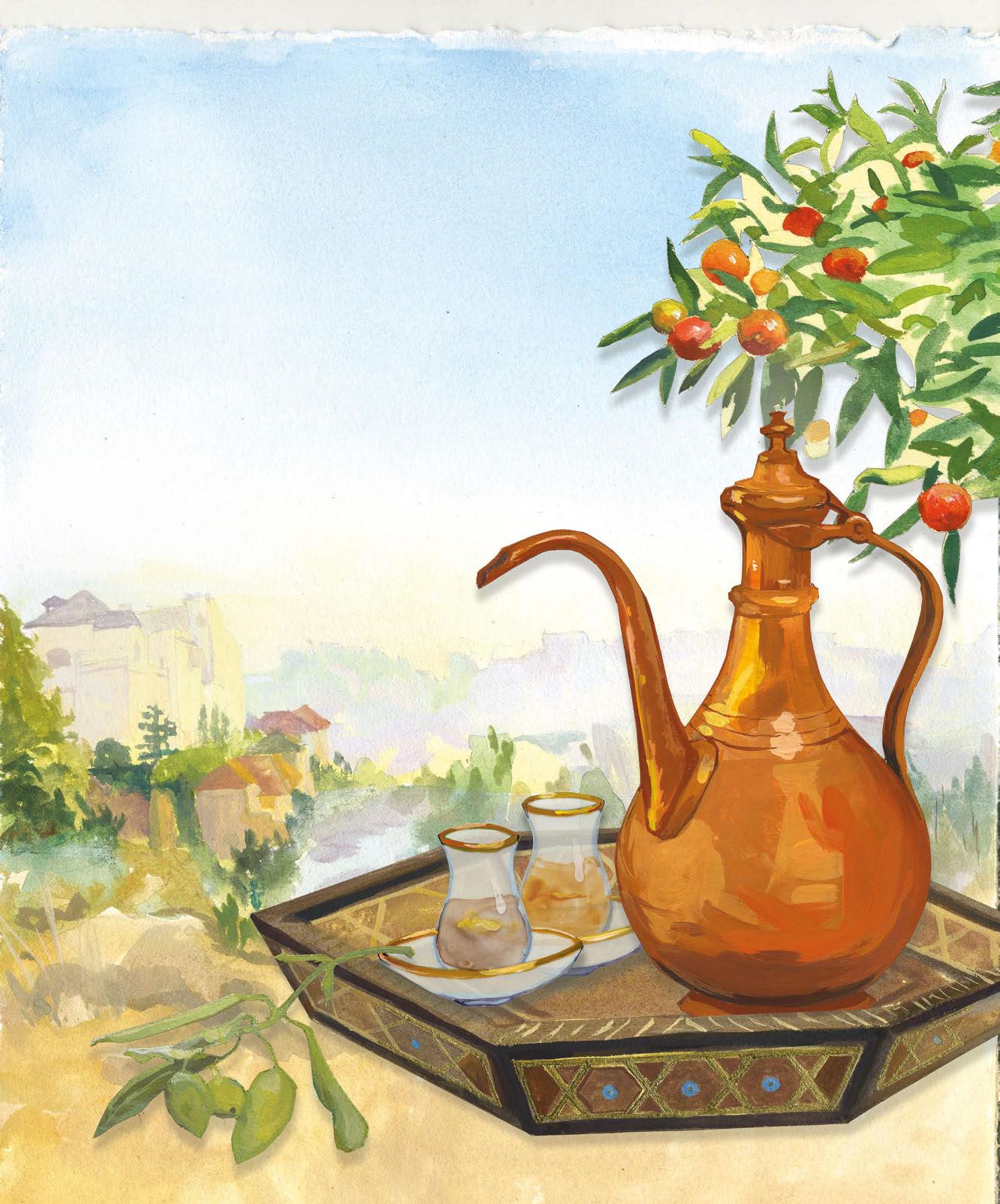
by AMAL KASSIR
illustration by ALIA EL-BERMANI
before you arrive, i scour the garden in search of the most delicious treasures i can find, which i will then plate on tiny dishes, drizzle with honey or garnish with parsley and place on my tray to serve you.
this is my country on this tray. green olives in round bowls, square ramekins with sugared crème — here, dip this fresh bread! i made it with my national flour. my national anthem is the sounds of guests’ glasses hitting the tray for another round of tea
my constitution is an olive-oil stained recipe i handwrote from Baba’s voice note. i do not care where you are from! my guest, immigrate into my home! this is my foreign policy. your passport stamp is the stains on your napkin. all i ask is that you take off your shoes when you come inside, know i will insist three times that you eat more. place your empty dishes on this tray — no need for washing. you’ve already washed my heart in your delight! please, enjoy i insist i insist i insist.

Blue Cactus duo Steph Stewart and Mario Arnez evolve their take on country music

Early in its existence, Blue Cactus seemed like a pretty standard-issue country band. The Chapel Hill duo of Steph Stewart and Mario Arnez played stately countrypolitan, a throwback to the 1970s with classic country themes. “I Never Knew Heartache (Then I Knew You)” was a punchline worthy of Tammy Wynette herself, one of many on the group’s 2017 debut album Blue Cactus.
Blue Cactus actually had similar parenthetical one-liner titles for more than half its songs, “I Can’t Remember (To Forget You),” “Not Alone (‘Till You Come Home)” and “So Right (You Got Left)” among them. The music was more than promising, but it was as if the songs emerged from a writing exercise, which wasn’t too far from the truth.
“Starting to write a song with the title first is an explicit, tried-and-true classic country thing,” says Arnez. “That can help with the writing, to know where you’re going through the whole process. It was fun, but it eventually felt like running into a wall.”
Born and raised in the small town of Catawba, Stewart grew up listening to classic country music and the femalecentered folk-pop of the late-1990s Lilith Fair tours. Arnez grew up in Florida before moving to North Carolina, citing everything from Nirvana to “Weird Al” Yankovic as formative influences.
Eventually they came together in Stewart’s first band, Steph Stewart & the Boyfriends, whose initial lineup featured original Squirrel Nut Zippers bassist Don Raleigh. The Boyfriends lineup shifted over time until it was down to just Stewart and Arnez, at which point they changed their name to Blue Cactus and went harder in a country direction.
While Arnez sang lead on a number of songs on Blue Cactus, now he makes most of his contributions on the instrumental side. “Push come to shove,” he says, “I’m happy to just shut up and play my guitar.”

Blue Cactus circa 2025 is a vastly different band in spirit as well as sound from these origins. Stewart and Arnez call their music “cosmic Americana,” setting Stewart’s plainspoken voice among atmospheric arrangements landing somewhere near 1970s-vintage Fleetwood Mac at its dreamiest.
Believer (Sleepy Cat Records), the third and newest Blue Cactus LP, glides into the stratosphere with waves of guitar ambience while retaining Stewart’s sharp wordplay. The lyrics “I don’t know if I’m getting better, if I’m getting worse, but I’m getting by,” from album opener “This Kind of Rain” is just one of many memorable soundbites.
“I’m really proud of those guys,” says Sleepy Cat co-founder Gabe Anderson, who is also one of the group’s regular drummers. “Steph has always been able to write timeless, classic country lyrics that make you think and have a clever punchline hook, and Mario’s arrangements always bring a nice, crooked element to the tunes. The last two records, they’ve had more of the big rock sound creeping into the spaciness. I think Steph and Mario have both really found their voice.”
“These songs were mostly written during a period of time when I hoped things were going to get better,” Stewart says. “It was during the pandemic and I was having a lot of chronic health problems, trying to figure out what to do at a time when we couldn’t play live. I was feeling lost before eventually coming around to feeling like we’d be all right. That’s what music does. Good music is medicine for people.”
Blue Cactus has been on a steadily upward trajectory in recent years, recording three albums, each an evolution of its predecessor, with a revolving cast of players from the Sleepy Cat orbit. Landmarks achieved this year include starring on an episode of the PBS series Shaped By Sound in the spring, followed by a six-week tour over the summer — their most extended stretch to date.
Their fall schedule includes performing at this month’s alternative-leaning Hopscotch Music Festival, then the Americana festival Raleigh Wide Open the first weekend in October. More new songs are already starting to percolate, but the agenda for the rest of this year will be mostly live shows and promotion of the Believer album.
“I’m grateful this record is out there,” Stewart says. “Some of these songs have been there for me when I was going through difficult times. I’m glad to share them with other people, maybe have them be there for anyone else going through some things, too. At the same time, we’re writing new stuff, already feeling like we can’t wait to get to the next record.
“ “
The last two records, they’ve had more of the big rock sound creeping into the spaciness. I think Steph and Mario have both really found their voice.
—
GABE ANDERSON


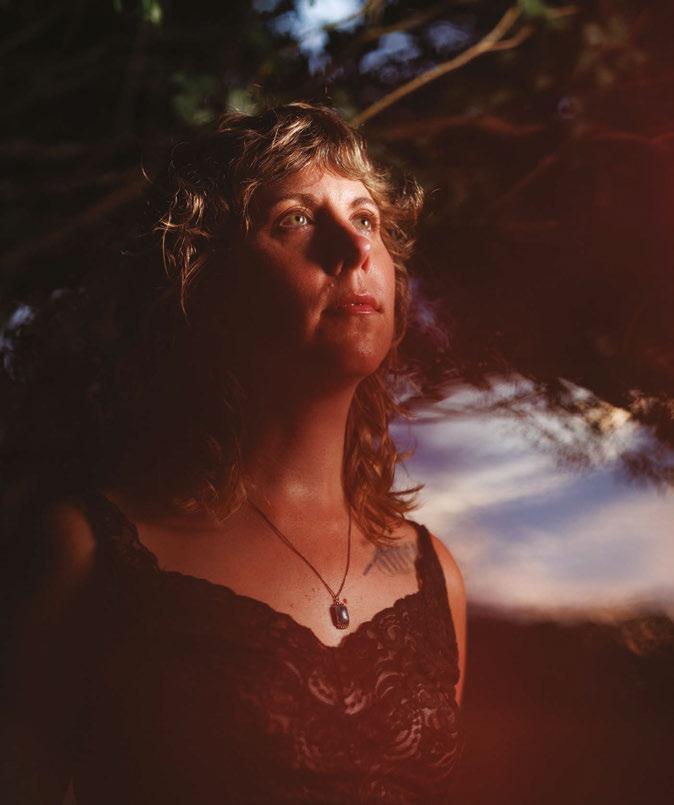

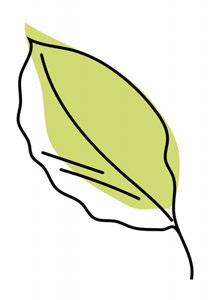

The garden of Jay and Kim Yourch is lush and welcoming, nestled into the quiet North Raleigh neighborhood of Hawthorne. As one looks around, it becomes apparent that gifted plant people live there.
Kim grew up in a family of serious gardeners, starting with her parents, who had a small vegetable garden, a strawberry patch and raspberries that she would help harvest and weed. Her father had grown up on a farm, and each summer, Kim spent a week or more with her grandparents. “They had a huge garden with perfect, alternating rows of vegetables and flowering bulbs,” she says. “I remember picking green beans, shelling peas and husking corn.” One fall, Kim’s grandfather sent her home with paper bags filled with bulbs to plant the next spring, including dahlias, cannas and gladiolus. “He told me how to store them and when to plant them,” she says. From that point, Kim was hooked on growing flowers — zinnias from seed, along with other annuals and the bulbs, which she dug up and stored every fall until she went to college.
Jay did not garden growing up, but his family did. “My mom grew tomatoes and zinnias, and my maternal grandfather had an ornamental garden of shrubs, small trees and perennials,” he says. Their home garden also had a small pond, where, Jay says, “my favorite part was feeding the goldfish.” But in college, he was “bitten by the houseplant bug” after his grandfather rooted an aucuba and coleus for him.
After Kim and Jay married, they bought their first home in Raleigh, a new house on a small lot. “It was mostly grass, with a few builder-planted fast-growing trees like river birches and red maples,” says Jay. They knew they had much to learn about gardening, so they joined the Friends of the JC Raulston Arboretum and attended lectures. Through that programming, they learned garden techniques and which plants would do well.







With that knowledge, Jay and Kim added Deodar cedar, tea olive and thorny elaeagnus as screening along the edges of the yard, then filled it in with small trees like eastern redbud, Kousa dogwood and Japanese snowbell. In a wet area in the back, they planted Japanese iris and other moisture-loving perennials like cardinal flower. “We also dug a small pond in the back, where we kept goldfish and grew water lilies and dwarf lotus,” says Jay.
They found they made a good gardening team. “Jay has always had a strong interest in woody plants, while I have mostly been interested in growing perennials, ferns and bulbs,” says Kim. “We enjoy working together in a space to create something beautiful.”
“Jay has always had a strong interest in woody plants, while I have mostly been interested in growing perennials, ferns and bulbs. We enjoy working together in a space to create something beautiful.”
— Kim Yourch
The couple bought the land for their current home in the spring of 1995. As soon as they removed a few trees, its name was revealed: Beech Grove, as the land was dominated by American beech. They started construction on their home five years later and they have lived there since 2001. From the start, Kim says, “we had a goal of ensuring there is something blooming year round — both for me and for the pollinators.” Jay helped with the research, and the two found that “fall through the winter was the most challenging, but then we managed to fill those months with Sasanqua
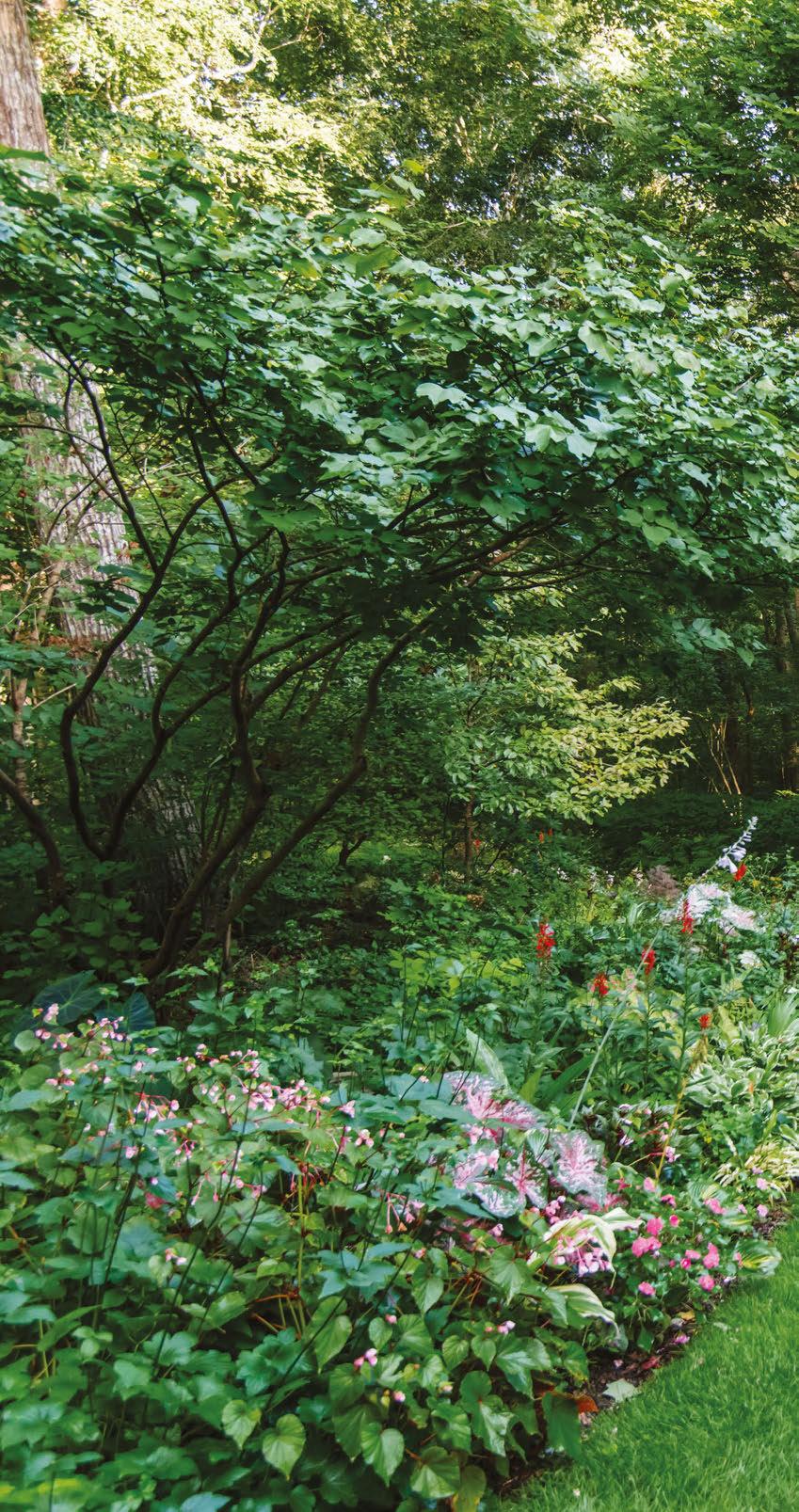



and Japonica camellias, witch hazels, Japanese spicebush, hellebores and late-winter flowering bulbs like daffodils and summer snowflakes,” says Kim. She especially loves making perennial gardens “filled with a tapestry of foliage and flower colors,” finding that caladiums and coleus in particular add an array of colors to their shade garden. “They also make me think of my grandfather, because I am still digging up bulbs every fall and storing them,” she says.
Over time, the garden has grown and evolved. Sometimes, they’ll learn about an interesting plant and hunt it down. Other times, Jay says, “we’ll see something in a garden center we like the looks of and then try to figure out where it might fit into the garden.” Jay confesses he has made many mistakes. In the beginning, for example, they didn’t realize that the new lot was full of poorly draining compacted clay, and they were not accounting for poor drainage. Over time, he learned to dig the clay out of the hole and replace it with better draining soil, “essentially putting the plant in a bathtub.” Later, the couple learned to blend amendments into the native soil.
The Yourches have also taken advantage of changes to their land that were outside their control. In 2021, they had several large trees go down behind the house, both on the highest bluff and on the floodplain. “We suddenly had more light in those areas than we’d ever had before, but because of the deer herd pressures, there were no tree seedlings to take their place,” Jay says. The fallen trees became an opportunity. “Because of the property’s unique topography and our love of native trees, we had the chance to recreate plant communities from the coastal plain and mountain regions of North Carolina and have them thrive in the conditions,” says Jay. But they would also look like they belonged, with mountain species growing on steep slopes among boulders, and coastal species growing on a moist creekside floodplain.
Some of the species planted in the



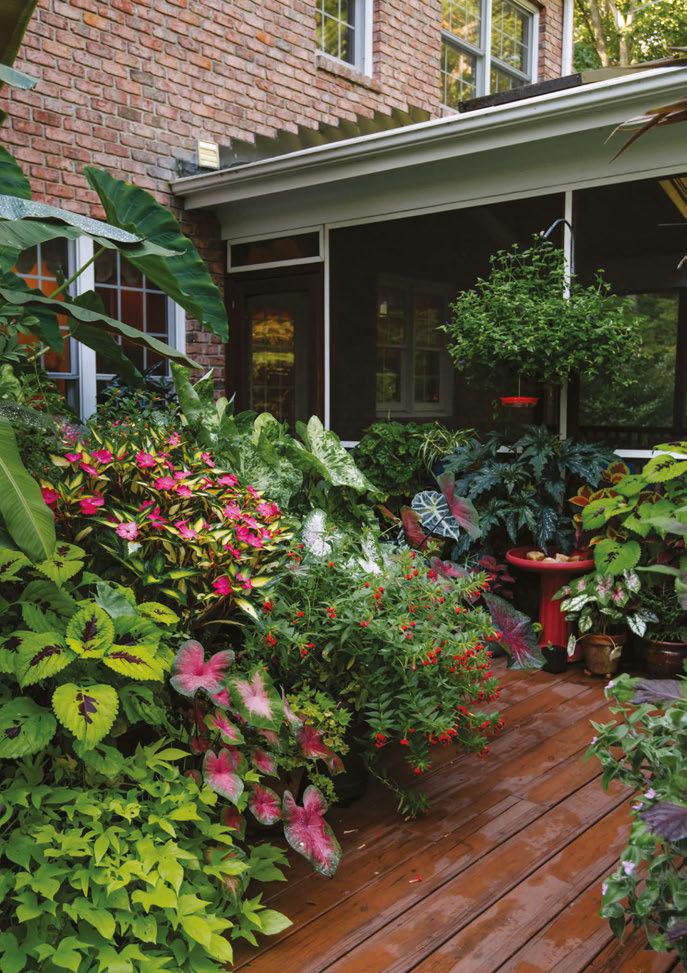
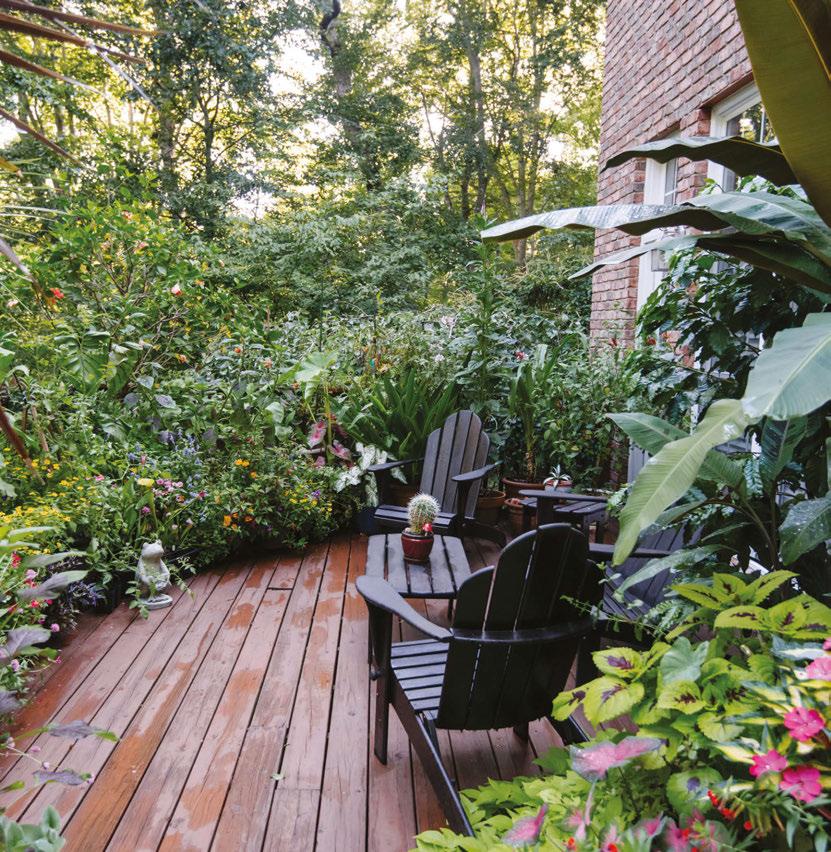

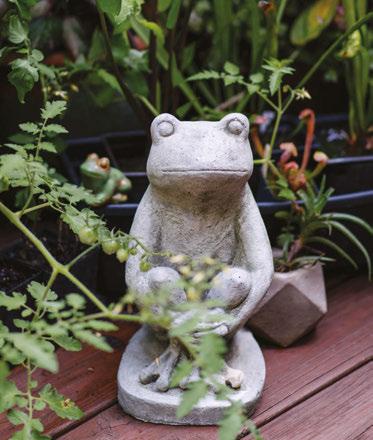
mountain section are cucumber magnolia, Fraser’s magnolia, chestnut oak, yellow buckeye, sugar maple, Eastern hemlock and Carolina hemlock. (Jay caged them to avoid deer damage until they were large enough to fend for themselves.) In the floodplain are sweetbay magnolia, swamp chestnut oak, pawpaw, bald cypress, loblolly bay, pond cypress and overcup oak, as well as Florida torreya, red bay, shellbark hickory and needle palm. Finding native trees and shrubs can be challenging, especially rare ones like those in Beech Grove, but they have had success with Homewood Nursery & Garden Center in North Raleigh and Garden Treasures Nursery in Wendell. “I also trade seeds of native trees with other enthusiasts online to obtain trees that aren’t commonly found,” he says.
Now, the two are experienced gardeners with advice to pass on to others. Jay says that for a larger property like Beech Grove, “focus on one area at a time so it’s easy to keep up with supplemental watering for newly planted trees and shrubs until they are established.” There are areas at Beech Grove that are too far from a hose bib to be watered conveniently, so the Yourches choose plants carefully for the site. They plant in autumn, winter or early spring so they can establish roots before summer heat and drought arrive.
“A nd don’t get discouraged when something dies,” says Kim. “I have heard so many people say they can’t grow anything, but we have had many plants die. You just keep experimenting, and eventually you will find the things that thrive in your garden with the amount of care you can provide.”
Today, Beech Grove is a destination garden for plant enthusiasts, garden clubs and conservationists. “The Yourch garden is always such a delight to visit,” says Mark Weathington, director of the JC Raulston Arboretum. “From the lush plantings surrounding the house to the native habitats along the bottom of the property, a new treasure awaits around every corner and in every season.”

David Tingen reflects on seven decades of bottle collecting




The spot was a decades-old dumping site generally ignored by adults. A roughly 8-foot embankment sloped down to the creek’s edge, where a swing served as the de facto welcome sign for neighborhood kids. It was a hideout, somewhere to while away the warmer months. David Tingen was a regular.
On this day, like so many others in that summer of 1955, Tingen pedaled his secondhand Schwinn bicycle four blocks from his home in Oakwood to “the creek.” His bike basket, installed to hold copies of THe Raleigh Times during his afternoon paper route, now carried a hand-carved miniature boat and a shovel.
Upon arrival, he set to work on creating a dam so he could float his boat. He dug into the gradient: scoop-dump, scoop-dump, scoop-dump… TINK
Several glass bottles tumbled from the slope like busted teeth. The colors gleamed blue, green and amber under the
sun. Tingen picked up the brightest one. It was about 3 inches tall, deep cobalt. He squinted to read the embossed lettering: Emerson Drug Company, Baltimore. It was beautiful. He wanted to know its story, and in time he would learn that it was a Bromo Seltzer bottle, produced roughly 45 years prior. Its blue color was standard at the time for distinguishing medicinal contents. The bottle is worth roughly $5 by today’s standards, but to the young collector, it was as good as gold.
He pocketed the bottle and a lifelong passion was born.
Seventy years later, Tingen is on the other side of a prolific life of bottle collecting that includes 50 years as an officer for the Raleigh Bottle Club (20 as president) and authoring four small-run collector’s guides. He is considered a preeminent expert on the history of bottling in the state of North Carolina, if not the Southeast. Bottle collecting has given him a network of friends, an appreciating asset and framework for history — but
the best part, he says, is still the thrill of holding a find in his hand.
“It has something real about it, something touchable, something you can look at, something you can put on the shelf, something you can study and learn about,” he says.
The early days consisted of digging and rummaging around Raleigh. In addition to the creek, favorite spots included the old water works in South Raleigh and the old Caraleigh Mills. As he unearthed bottles, he took them home, loaded them into crates and stuck them beneath his family’s house, plucking his favorites to line the sills of his bedroom.
A lull came as he entered early adulthood and his life busied. He served in the Navy, studied at Hardbarger Business College and Wake Technical Community College, then worked a variety of jobs before settling into a career as an electronics field sales engineer. He started a family and moved to North Raleigh. When he did ultimately return to collect-

ing, he followed his curiosity in pursuit of Raleigh bottles, then North Carolina bottles, then pre-prohibition beer bottles. His collection swelled to well over 1,000.
As was the case with the first blue bottle, he wanted to know about each of them. Before the internet was around, he spent countless hours in the Olivia Raney Library and the state archives scouring microfilm for the information that he would ultimately compile for his books.
“It takes forever to go through microfilms of newspaper archives,” he says. “I mean, it’s just tedious work. Then I had to get my wife to agree to let me do it, because it took so many hours.”
Now 82 years old, Tingen has downsized his collection to about 350 “keepers” — bottles of exceptional scarcity, beauty or both — in recent years, selling the bulk and giving many of his finest to his children. His ambition these days is to be
a resource for what he says is a growing number of North Carolina collectors. The state is rich with bottling history. Pepsi and Cheerwine were born here and the latter’s predecessor, Mint Cola, has roots in Salisbury. He assists friends and strangers alike with research, buying and selling. While his blue Emerson bottle might only fetch enough to pay for for snacks on the drive home, an embossed milk bottle from one of Raleigh’s old dairies might yield in between $20 and $200, and a pre-Civil War North Carolina soda bottle could bring in between $500 and $4,000.
Randy Cobb, one of the friends who has benefited from Tingen’s passion, lives in Macclesfield and started collecting in the late 1990s. He first met Tingen in 2010 at a Greensboro bottle show, walking past his display table and striking up a conversation about his own area of focus: Tarboro bottles.

“He was like a walking encyclopedia,” remembers Cobb. “He just knew his stuff.”
At Tingen’s behest, Cobb started attending Raleigh Bottle Club meetings, and the two would eventually serve as club officers together. Over the years, they’ve made exchanges, helped each other with various searches, and become friends. Cobb says what makes Tingen stand apart is his authentic curiosity about the history of each bottle, such as a pre-prohibition Tarboro beer bottle Tingen sold him five years ago. Around the time the pair met, Tingen had promised Cobb that, when he ultimately decided to downsize, he’d give him the first crack at the bottle. When he sold it to Cobb, Tingen told him the story of how he had come to own it: by trading a couple of old wax-sealing canning jars — the kind his grandmother used for jellies — to a collector friend who’d found the bottle in Rocky Mount. The trade had occurred
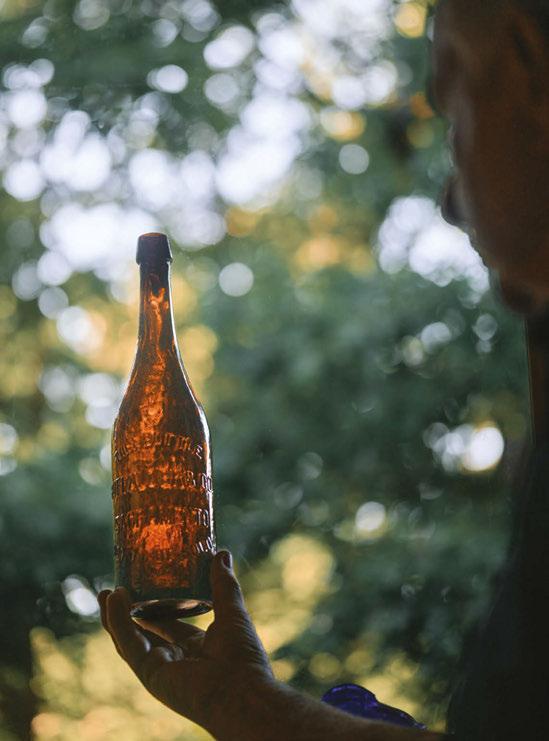

“He has a good memory and he has stories. He can show you a bottle and tell you exactly where it came from, if he found it or he bought it.” — Randy Cobb
at the flea market at the state fairgrounds some 45 years prior.
“He has a good memory and he has stories,” says Cobb. “He can show you a bottle and tell you exactly where it came from, if he found it or he bought it. When I think of someone who collects bottles, he’s the number one guy I think of.”
Bottle collecting has changed in the 70 years since Tingen first started. The advent of the internet lessened research workloads and broadened networks. Many of the dump sites that yielded his first scores in the 1950s are long since paved over, including his original creek spot near Boundary and Watauga Streets,
which was taken over by the city to be used as a drainage route.
Tingen has fully embraced the modern resources, but he says no matter his age, the harder the hunt, the more thrilling the find.
“You go out and look through an old dump or a creek bed that has been filled in, or a cistern or outhouse that’s 100 years old — to a bottle collector it’s a treasure hunt,” he says. “The other part of the hunt is going to a massive bottle show, like the one in Baltimore, where they’re 350 8-foot tables full of bottles. That’s a different environment. You walk along and you see something in this area, Oh, man, that’s
nice. I’ve been looking for one of those. You give them the money, and you walk off.”
Among the vestigial bottles, perched in a wall-mounted display case in his home, is the very first cobalt-blue Emerson bottle, a reminder of the days of roaming around town with nothing but volition and a shovel.
“In cold weather when the other kids were staying at home, I’d put on all my heavy clothes and my ratty shoes and jeans, and I’d be down there digging around for bottles,” he says. “I’ve always believed that you succeed by being a student of whatever you pursue, and it has been fun for me.”


Rosy Alexander used an earthy color palette and vintage pieces to transform a penthouse into a warm and cozy home
by AYN-MONIQUE KLAHRE
photography
by
ROSY ALEXANDER
When a tech entrepreneur decided to move into this penthouse apartment in the 400 West building downtown, it shortened his commute. But for a man who loves travel and the outdoors, the apartment as it was — white walls, minimalist detailing, high ceilings — felt cold and cavernous.
He enlisted interior designer Rosy Alexander, whose work he’d seen on Instagram, to turn the high-rise abode into a retreat, a place that reflected his love of nature, adventure and art. “He wanted a creative space to host friends and display art, a home that felt cozy and collected,” says Alexander. “The vibe we were going for was modern and soft, but also masculine.”
The first step was selecting a palette. Starting with the homeowner’s favorite color, green, Alexander worked in muted tones of brown, coral and peach to evoke a natural feel without being too on the nose. “That really drove the color scheme, and we added in earth tones, like terra cotta notes,” says Alexander. The colors are used in various ways throughout the home — on the walls, in the rugs and window treatments, on furniture and even in art commissioned to get the balance right. “It’s important for me to feel connected to nature, so I wanted a palette of greens,” says the homeowner.
The bedroom, with its dramatic 16foot ceilings, is the boldest showcase of the color. Here, the walls, ceiling, trim and doors are all painted in the same shade, Sherwin-Williams’ Green Earth. “We leaned into the green completely,” says Alexander. “It gives the room this immersive, calming energy.” Even the pendant light above the bed is in a tonal take on the color. The art, too, offers a take: the stone piece above the bed is not, in fact, an antique, but a fine art piece by Canadian artist Kit King. “We wanted it to look like a fragment of an ancient tablet,” says Alexander. “It’s neither old nor heavy, but it looks like it’s been broken and moss has grown over it,” says the homeowner. He also likes the lights next
to the bed. “They look like mushrooms, they’re unique.” But a favorite piece in this space might be an original painting of a trail map of a ski area in New Hampshire. “I love waking up and seeing the mountains and the city at the same time,” he says.
Throughout the home, those soft neutrals are grounded by rich textures and curated contrast. The furnishings pull from Scandinavian, European and rustic influences, a mix of new and vintage pieces collected to properly outfit the space and to give it a sense of patina. The living room features a generously sized, slip-covered sofa, designed for comfort and easy cleaning (and to accommodate his two dogs). “Function was just as important as form,” Alexander says. She found end tables at CB2 and the coffee table at Pigfish Lane; the homeowner had the idea to combine three vintage rugs to create just the right size and a spectrum of warm, worn color underfoot. “We were having a tough time finding a rug large enough to fit all the legs of the sofa, and this was a fun way to get a bunch of different touches of color onto the floor,” says Alexander. “We did a pattern play of broken geometric shapes, plaids and rectangles.” On the sofa, Alexander added a mix of pillows in fabrics from India and Thailand, many found through Raleigh vendor Jasmin Desai of Xasmin Interiors. For one wall of the living area, Alexander found an expansive antique Chinese console at High Point vendor Schwung Home to anchor the space. It serves as the base of a gallery wall made up of art from various sources, including two pieces the homeowner already had, a Frame TV and new pieces Alexander commissioned. “I love all the artwork she selected, it’s very abstract and has a lot of depth to it,” says the homeowner. “She chose simple things that together tell a complex story.” A unique lighting fixture from French designer Olivier Abry of Wo & Wé adds both lighting and a sculptural element. “I have a thing for light fixtures with interesting shapes, and this one looks a little robotic,” says Alexander, adding that she feels exposed wiring “works well in certain situations to add
character and edge.” Behind the sofa is a large canvas by Canadian artist David Wilstermann, which Alexander tacked straight to the wall for a casual feel.
The windows serve as art for the room as well. “It’s this amazing, almost floorto-ceiling view of the city of Raleigh. The coolest scene is at night during a thunderstorm, you can see the lightning coming down,” says the homeowner. The windows already have roller shades built in for light filtration, so they didn’t need curtains, exactly. “But we wanted to disguise the shades and have the curtains act like pieces of art,” says Alexander. She worked with a seamstress in France to design and sew shades with design influence from pojagi, a Korean textile art form that involves using scraps of fabric to make a mosaic. “I love how the light filters through, it just looks a little different throughout every space in the apartment,” says the homeowner.
Since the living and dining area are connected, Alexander chose pendant lights in the same creamy white color and similar sculptural shapes to visually link the space. “I love how the paper shade lamp over the living area looks like the moon,” Alexander says. “I have a thing for interesting shapes.”
In the dining area, an antique milk glass fixture from Eastern Europe floats above a handmade trestle table by local craftsman Nate Sprankle. “It’s cool to have a brand new dining table made by an artisan in Raleigh, but underneath a 100-year-old lighting fixture,” says the homeowner. For the chairs, Alexander used two colors of a vintage style from a Scandinavian designer to give it a mismatched feel. “I love that Rosy had this idea, I would have gotten six matching chairs, but this looks so much cooler,” says the homeowner. Nearby are stools that he can use either as side tables or extra seating at the table.
Taken together, the overall feel of the apartment is now “moody but masculine,” says Alexander. And that suits the homeowner just fine: “Everything she chose feels authentic to me and to the space — it has new energy plus old energy.”

Alexander customdesigned the curtains to match the home’s color scheme and had French seamstress Marie Colin-Madan create them. The pillows are from Raleigh vendor Jasmin Desai of Xasmin Interiors, who imports fabrics from India and Asia. The sofa is from Maiden Home, the end tables are from CB2 and the coffee table was found at Pigfish Lane.
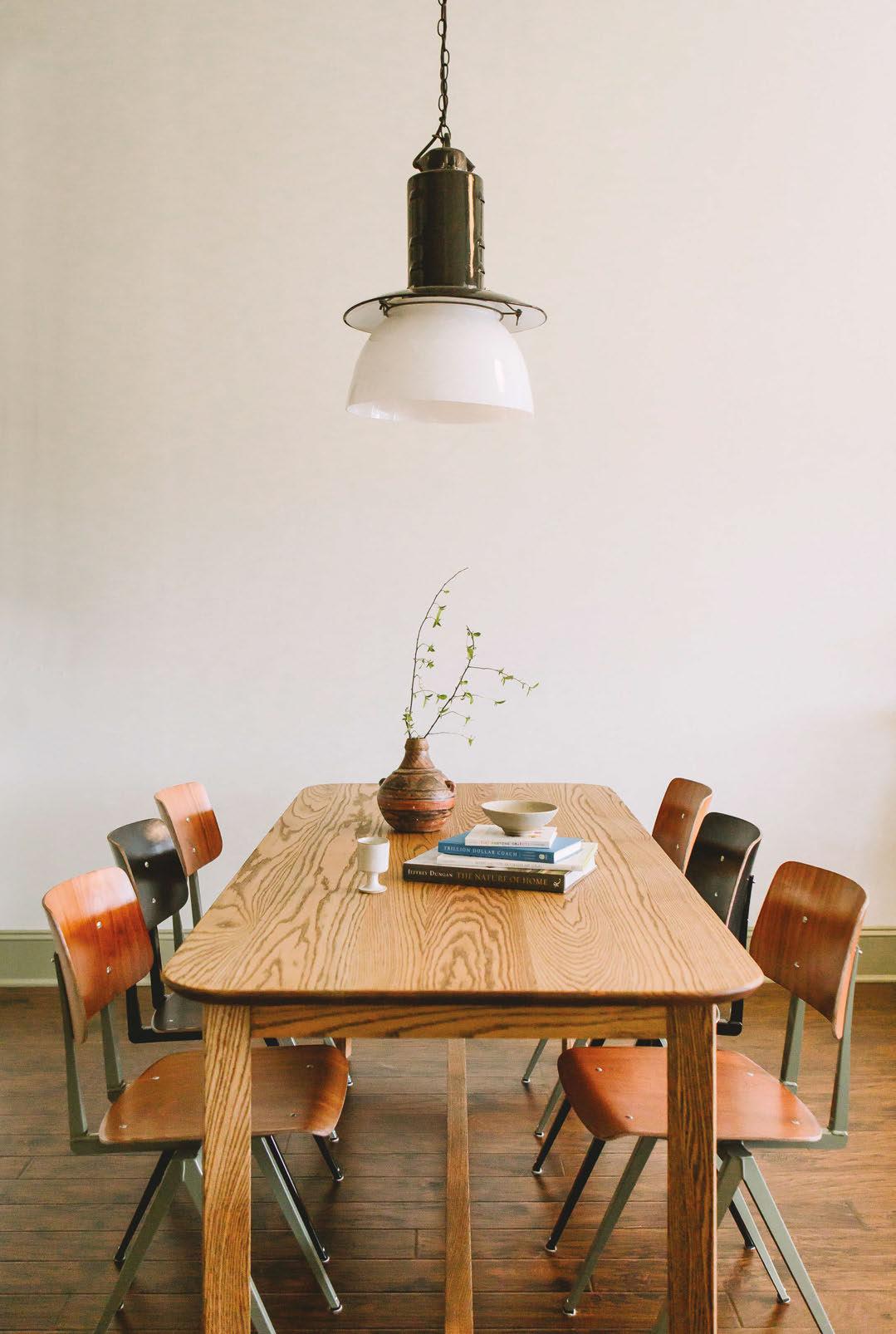
“The vibe we were going for was modern and soft, but also masculine.”
— Rosy Alexander



Opposite page: An antique milk glass light hangs above a dining table made by local craftsman Nate Sprankle. Alexander accessorized it with two colors of vintage-look S16 chairs from Dutch designer Galvanitas Compass Collection. This page, clockwise from top: The entire bedroom is painted Earth Green by Sherwin Williams. The light fixture is the Spotlight pendant from A-N-D. The entryway console is a European antique and the entryway rug is from Lulu and Georgia. The “slabs” over the bed were commissioned from Canadian artist Kit King.


by COLONY LITTLE photography by JOSHUA STEADMAN

Murals have the ability to transform spaces — they can pay homage to the past, convey a sense of place and activate energy within the public sphere. Artist Anna Payne Previtte’s work does just that, combining fresh color, symbolism and bold geometric elements to engage its viewers. Payne Previtte painted her first mural in Gateway Plaza in 2019 along the walls of Mordecai Beverage Co. There, bold stripes in alternating shades of blue and pink melded into tree trunks whose roots envelop the wall and surround a golden sun painted in gradient yellow. The style feels both new and a little retro, an appropriate flourish for a 1960s-era shopping center that was recently revitalized and now holds retail, restaurants and bakeries including Union Special, Fiction Kitchen and Mala Pata.
Another large-scale piece, titled Of the
Same Vine, decorates the enclosure for the outdoor seating for Parkside Restaurant on the corner of W. Martin and N. Dawson Street — on view not just to diners, but to the tens of thousands who drive through this busy split before it turns back into NC Highway 401. Striped hues of red, orange and green mimic the restaurant’s architectural details and iconic neon sign; multicolored, outstretched hands emerge from lush green vines. “I love the interplay between figure, nature and architecture,” Payne Previtte says. “I designed the mural to speak to our own intermingling as people as well as our innate connections to our surroundings and natural evolutions.”
Both murals showcase some of Payne Previtte’s signature motifs: strong lines and hard-edged graphics that convey the prismatic properties of light. Often, multicolored light beams extend from a central point and radiate to the margins.
Even in her smaller-scale work, like paintings, she frequently incorporates muralistic elements, allowing the bold lines from the canvas to extend onto the walls surrounding the work as part of an installation.
She recalls painting her first mural somewhere between grade school and middle school. “I was allowed to paint my room as a kid,” she says. “I think that might be one of the experiences that pushed me towards muraling.” Inspired by her older sister, who had painted her own bedroom wall with a small design, Payne Previtte wanted to make her own unique mark in her space. “I painted this big iron archway with a sunset in the middle; it’s very emblematic of what I do now,” she says.
Payne Previtte grew up in Greensboro and studied fine art and religion at the University of North Carolina at Chapel Hill, where she learned to incorporate

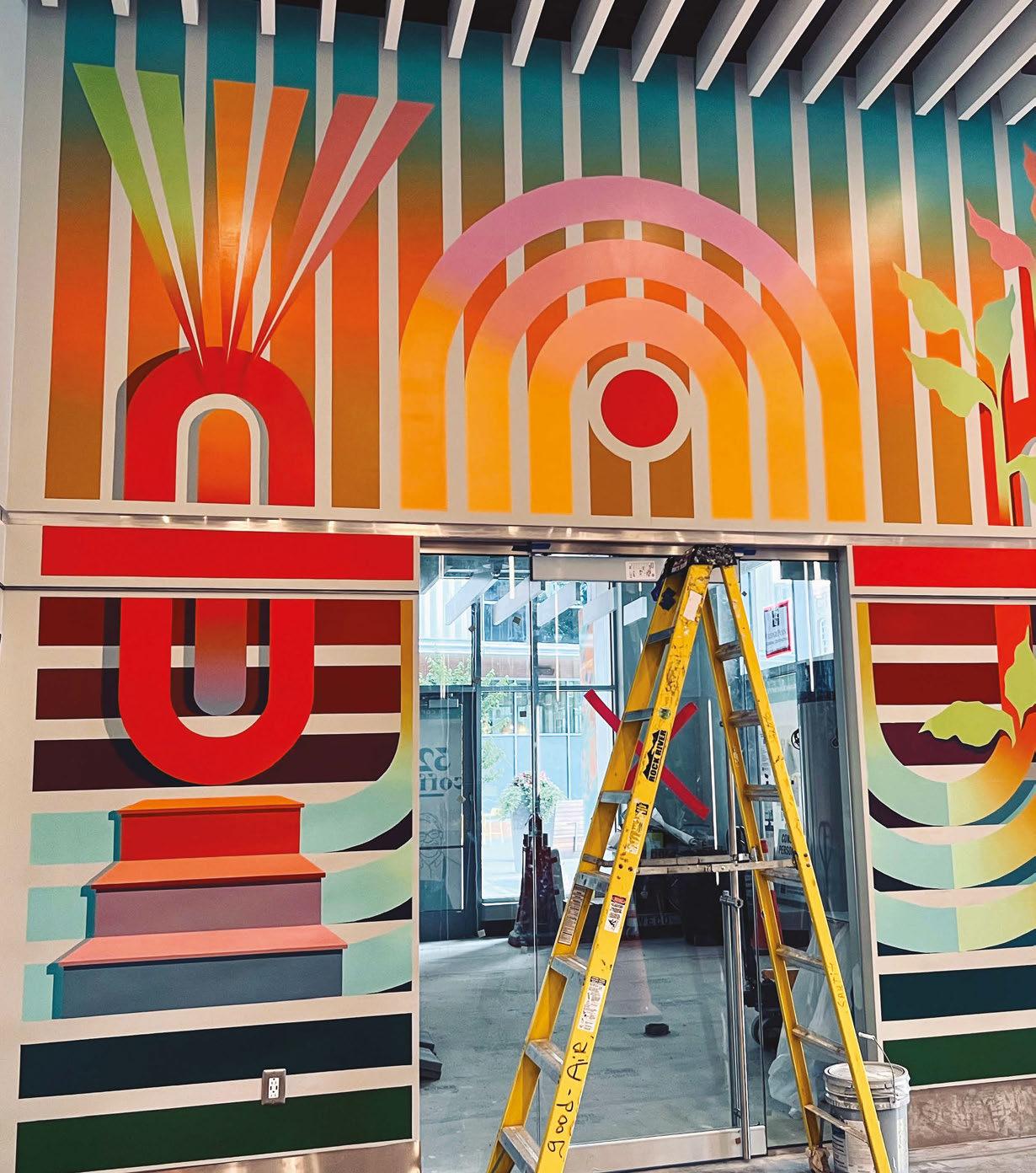

“I love the interplay between figure, nature and architecture.”
— ANNA PAYNE PREVITTE
multiple art forms into her practice, including hard-edge abstraction, collage and cyanotype printing. “I try to experiment,” she says. “I just barely tip over into mixed media, but at the very least, it’s postmodern in that I pull a little bit of classic figuration with constructivist modern abstraction.”
With her husband, she moved to Raleigh in 2018 and was inspired by its potential. “We found a house and I had a home studio, but as we grew roots, I really wanted to be immersed in the art scene,” she says. She started working at Gallery C and teaching classes, then heading downtown for First Fridays. “I was finding my path — actively seeking group exhibits, showing my work and making sure that I was in conversation with other artists,” she says. She had solo showcases at Trophy Brewing & Taproom and the Wake County Justice Center.
In 2023, she was awarded an Emerging Artist Residency at Artspace, a program where up-and-coming artists are granted free studio space for a year to create and collaborate with fellow tenants. “Artspace was a savior and a place where I could tap into a stable pipeline of opportunities,” she says. “Coming here helped me focus all of that energy.”
Over her year-long residence, Payne Previtte experimented with technical elements of her work, incorporating light sources and figurative forms like arms, hands and eyes into her paintings. In doing so, she expanded the artistic conversations and narratives she was conveying in the work, drawing the viewer’s eye with color. “I wanted to push this conversation of innovation, drawing from classics but not reinventing the wheel,” she says. In addition to the strong bands of color that evoke the patterns that come from concentrated light beams, she conceptually began to explore the way
living beings are attracted to light itself.
One piece she created during her residency is Phototrophs in Sanguine Sun, a triptych painted on paper that she layered onto acrylic-painted wood panels. At the bottom of each panel, a set of hands rendered in oil pastels reaches toward polished golden orbs that contain LED lights. Beams of painted, multicolored light rays shoot from each source.
The piece was a byproduct of Payne Previtte’s examination of and experimentation with concepts in nature, specifically with the idea of phototropism, or the way plants grow towards light. She explains: “I really enjoy intuitive art making, so I started dragging ivy leaves through paint.” She began replicating the lines she created through her experiments in her paintings. “I wanted them to have kind of this trailing at the end, but the paper I started it on wasn’t big enough, and I wanted more space to explore the subject.” That’s how the wood panels were introduced into the piece, and later the orb-shaped light sources.
The work was loosely inspired by a visit to the Prado Museum in Madrid, where she experienced Hieronymus Bosch’s surrealist Renaissance-era masterpiece Garden of Earthly Delights, a triptych that depicts the Garden of Eden, Earth and Hell in three panels each loaded with figurative symbolism. “I’m drawn to the Enlightenment, that was a huge inspiration for me in school, but I’m also so drawn to futurism,” she says. With her own work, Payne Previtte frequently explores the ideas of light and hope.
The leaf motif shows up frequently in her paintings. “I use it as a motif to talk about humanity,” Payne Previtte says. In Phototrophs in Sanguine Sun, the leaves are intertwined with hands on a blood-red base (“sanguine” meaning “of the blood”) and each panel has its own light source.
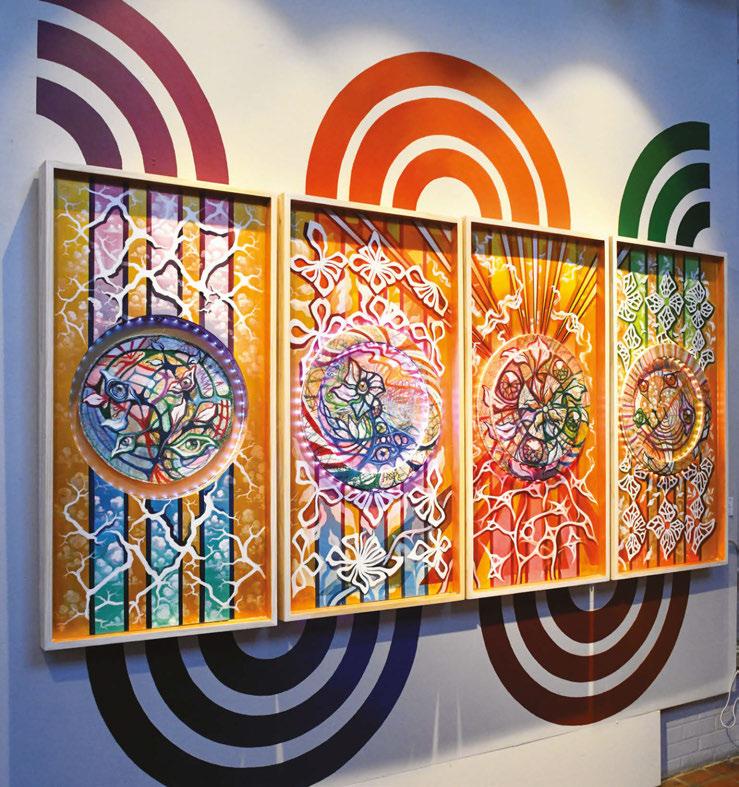

“The hands are growing; some are more successful [at reaching the light] than others; it has this liturgical, expressive movement and posture and the light lifts the piece, like an ascension,” she says. The religious undertones reflect her childhood experiences. “My family was very involved in a progressive, ecumenical and diverse church, so for me, religion was more in line with therapy and community,” she says. Through her work, Payne Previtte also seeks to evoke a visceral reaction from viewers that transcends religious beliefs. “I was trying to ask this question, what’s important?” she says. “If I’m going to make something that people are looking at, what am I going to try to tap into? I
wanted to create a sense of warmth.”
Building on that communal ethos, throughout her residency Payne Previtte engaged her studio visitors in a form of call-and-response for another one of her pieces. “I was most excited about having a public-facing studio, and I wanted that to show up in the work,” she says.
For this collaborative work, she invited First Friday visitors to artistically respond to a prompt to draw a continuous line on paper. “I wanted them to focus and relax — I asked them to take a few deep breaths and respond to their environment,” she says. She was pleasantly surprised with how participants delivered their artistic responses through squiggles, lines and loops. She also
noticed (despite a request to avoid representational illustrations) repeating symbols like faces, skulls, hearts and eyes. “I initially planned to make a series of architectural paintings, and I thought people were going to respond to their physical environment,” she says. “Instead, people responded to their mental states and their emotional environment.” She changed the blank pages each month, and started to recognize seasonal iconography differences in what her guests drew.
Using these drawings as a base layer in the work, Payne Previtte created a multipanel piece, titled Seasonal Sightlines, featuring four round portals lined in LED lights surrounded by painted leaves, flowers and rays of light depicting




the seasons. When she displayed the piece at Artspace during her 2024 solo show Life Lines, Payne Previtte painted a series of retro-style rainbow waves with colors corresponding to the seasons within each panel. “They are the ebbs and flows of art making,” she says, reflecting on her residency.
After Payne Previtte finished her residency, she decided to continue working out of Artspace. “The lesson I needed to learn was confidence, and I think that that’s where the residency structure was very helpful,” she says. “Artspace has a legacy of resident artists; I feel honored to be a part of that conversation and yet still feel I need to live up to it.”
In her brightly lit studio, a few of her
completed works are displayed, embellished with sharp lines and sinewy vines that extend beyond the paintings onto the walls. Collectors of her work are drawn to the energy she creates through her painting. “Anna’s use of vibrant colors and intricate patterns instantly attracted us to her work,” says Jedidiah Gant of Raleigh Murals Project, who engaged Payne Previtte for the Mordecai Beverage Co. mural back in 2019. Afterwards, he and his wife commissioned a piece for their own home. “We had open wall space facing east that was screaming for art, so we asked Anna to paint a rising golden sun surrounded by a burst of colorful rays,” he says. “Our visitors regularly comment on how dynamic the piece is.”
Recently, Payne Previtte’s painting Overflow was acquired by Visit Raleigh for its lobby. “I’m quite proud of that piece and greatly enjoy placing works in public spaces, especially those that value creativity and like to support local,” she says. Payne Previtte is spending quality time in the studio taking stock in her work and career. “I am greatly enjoying the evolution of style and purpose this year has brought to my new work. I’m hoping to go into next year with a poignant and representative body of work that focuses on themes of responsibility, accountability and humanitarianism — all while still existing in a celebratory and positive creative space.”







CARLOS MIGUEL PRIETO | MUSIC DIRECTOR
MEYMANDI CONCERT HALL, WOOLNER STAGE, MARTIN MARIETTA CENTER FOR THE PERFORMING ARTS, RALEIGH
Experience the passion and artistry of Music Director Carlos Miguel Prieto leading your North Carolina Symphony in this dynamic concert series.
DVOŘÁK: NEW WORLD SYMPHONY
FRI/SAT, SEP 19-20, 2025 | 8PM
ALL BEETHOVEN
FRI/SAT, OCT 10-11, 2025 | 8PM
COPLAND SYMPHONY NO. 3
FRI/SAT, OCT 17-18, 2025 | 8PM


BEETHOVEN “EROICA” SYMPHONY
FRI/SAT, NOV 14-15, 2025 | 8PM
GERSHWIN & BERNSTEIN
FRI/SAT, FEB 6-7, 2026 | 8PM
TCHAIKOVSKY 1812 & VIOLIN CONCERTO
FRI/SAT, FEB 20-21, 2026 | 8PM





“Prieto was a dynamic presence on the podium, conducting with vigor and tremendous enthusiasm.”
— THE TIMES, LONDON
BEETHOVEN “EMPEROR” PIANO CONCERTO
FRI/SAT, MAR 20-21, 2026 | 8PM
MOZART ”GREAT” MASS
FRI/SAT, APR 10-11, 2026 | 8PM
APPALACHIAN SPRING
FRI/SAT, MAY 8-9, 2026 | 8PM






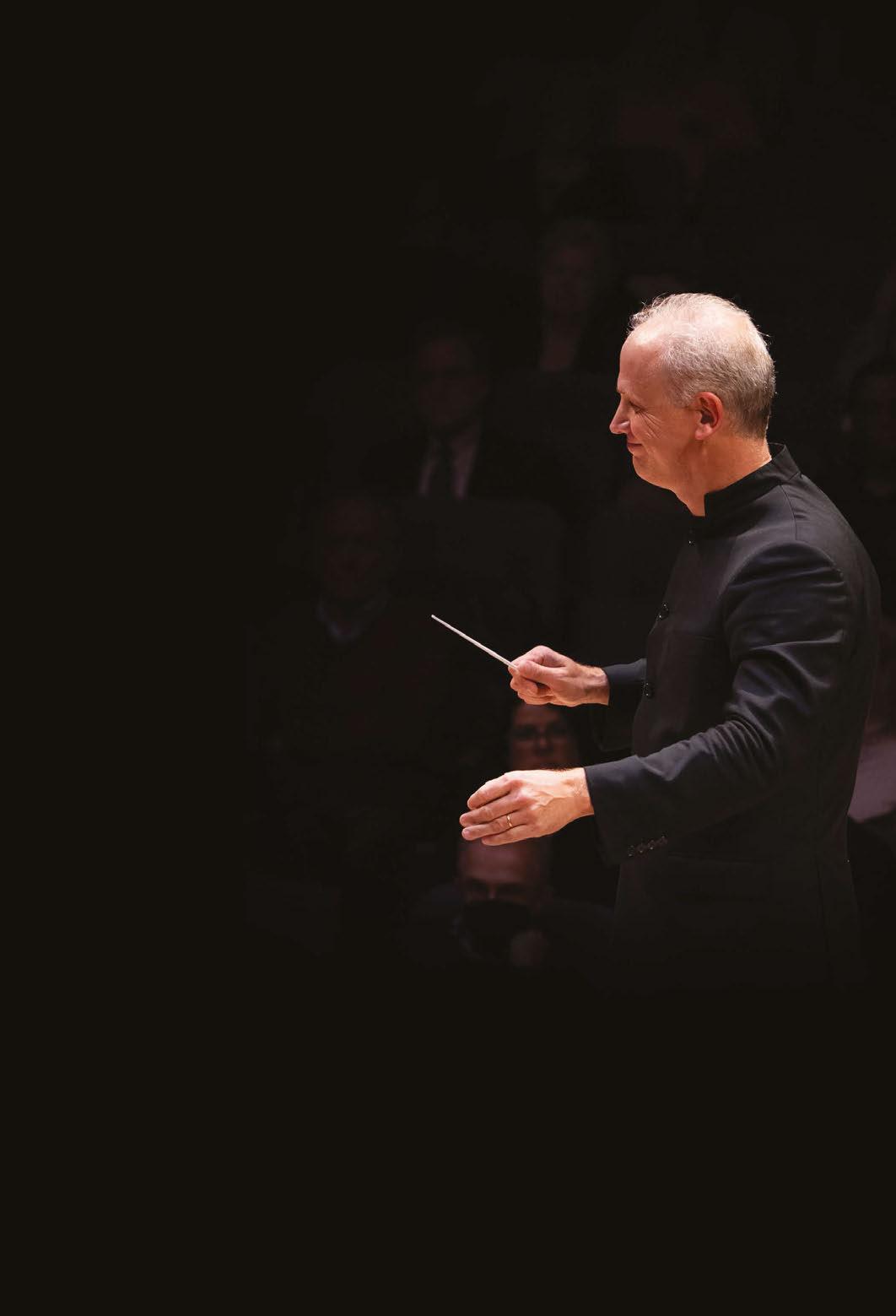

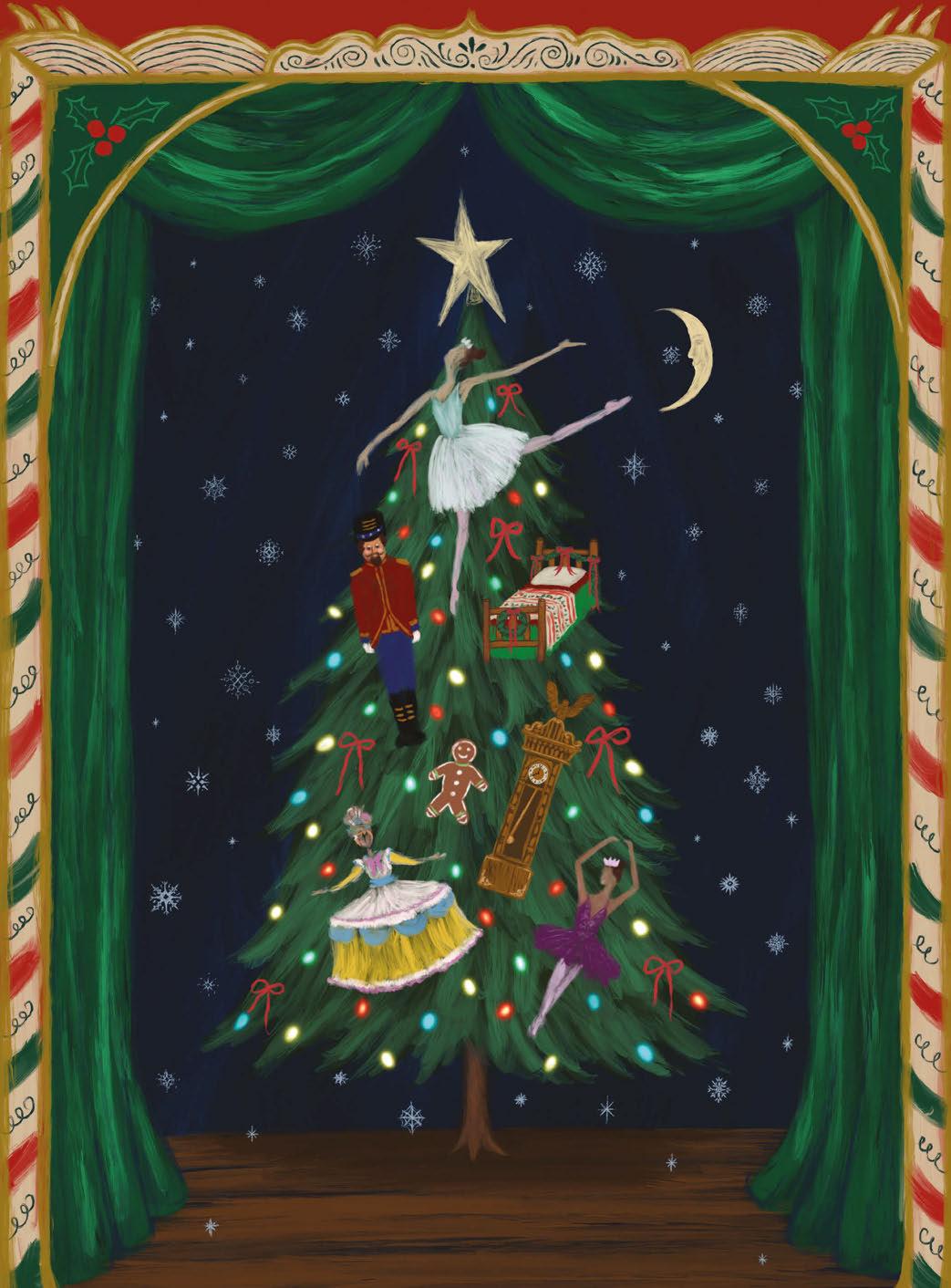
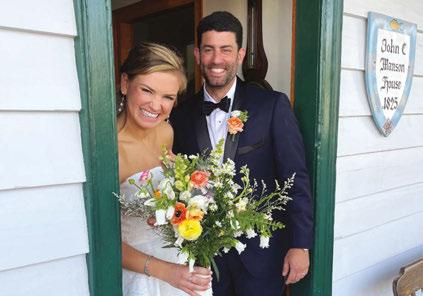
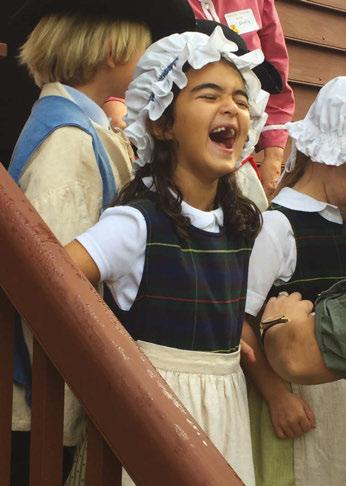


Weddings • School Field Trips Tours • History • Art • Events and find the unique spots, hidden views and unusual history of Beaufort! Don't Miss...
OCTOBER 25
The Fall Party featuring artist Heather Sink Live Cool Jazz, Heavy Hors d’oeuvres, & Open Bar
NOVEMBER 1
Voices of the Past in the Old Burying Ground A guided tour where local ghosts share tales of bygone days



www.beauforthistoricsite.org or

or


and







– January 11
ADMISSION for Museum Members
naturalsciences.org/whales
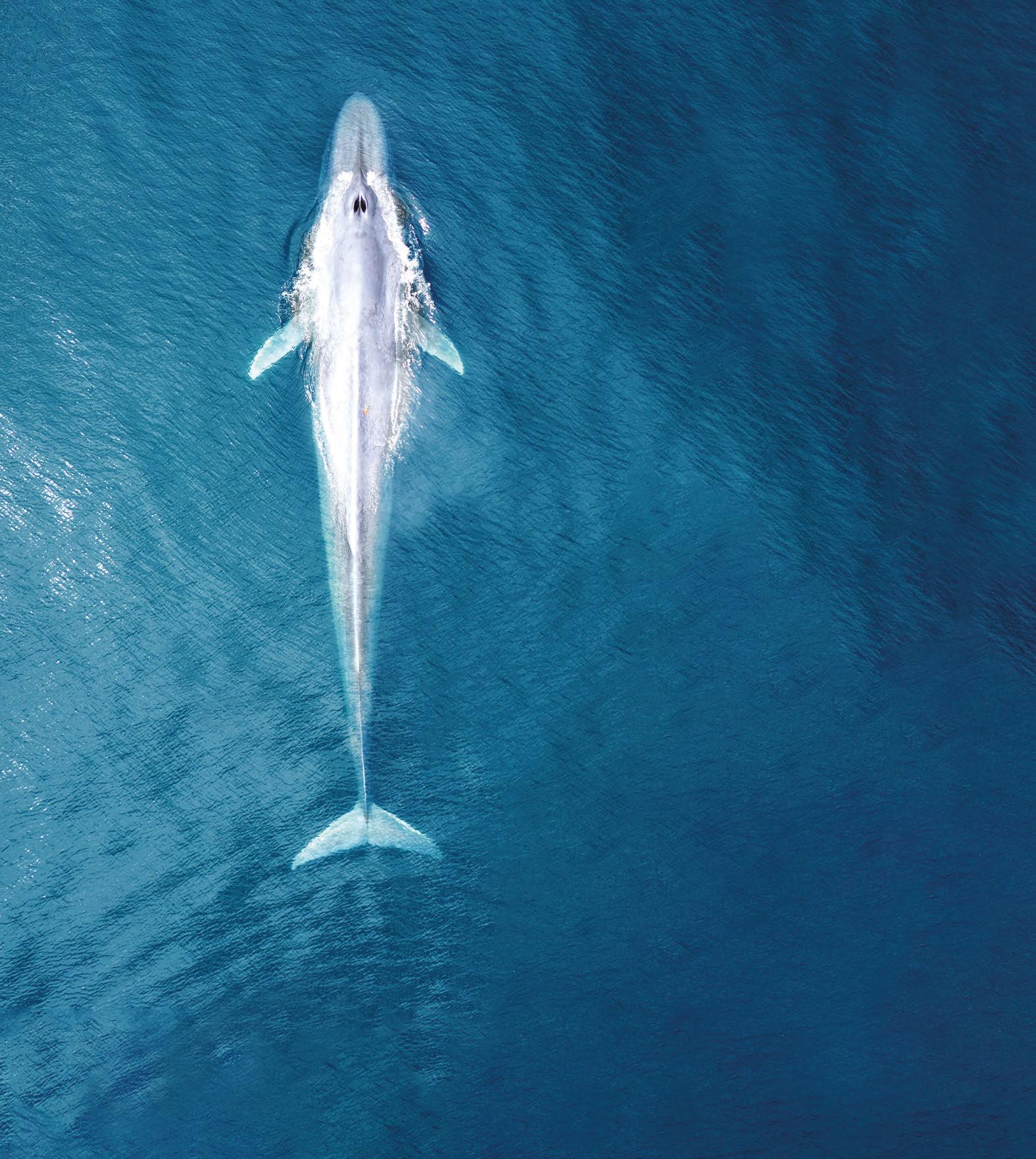


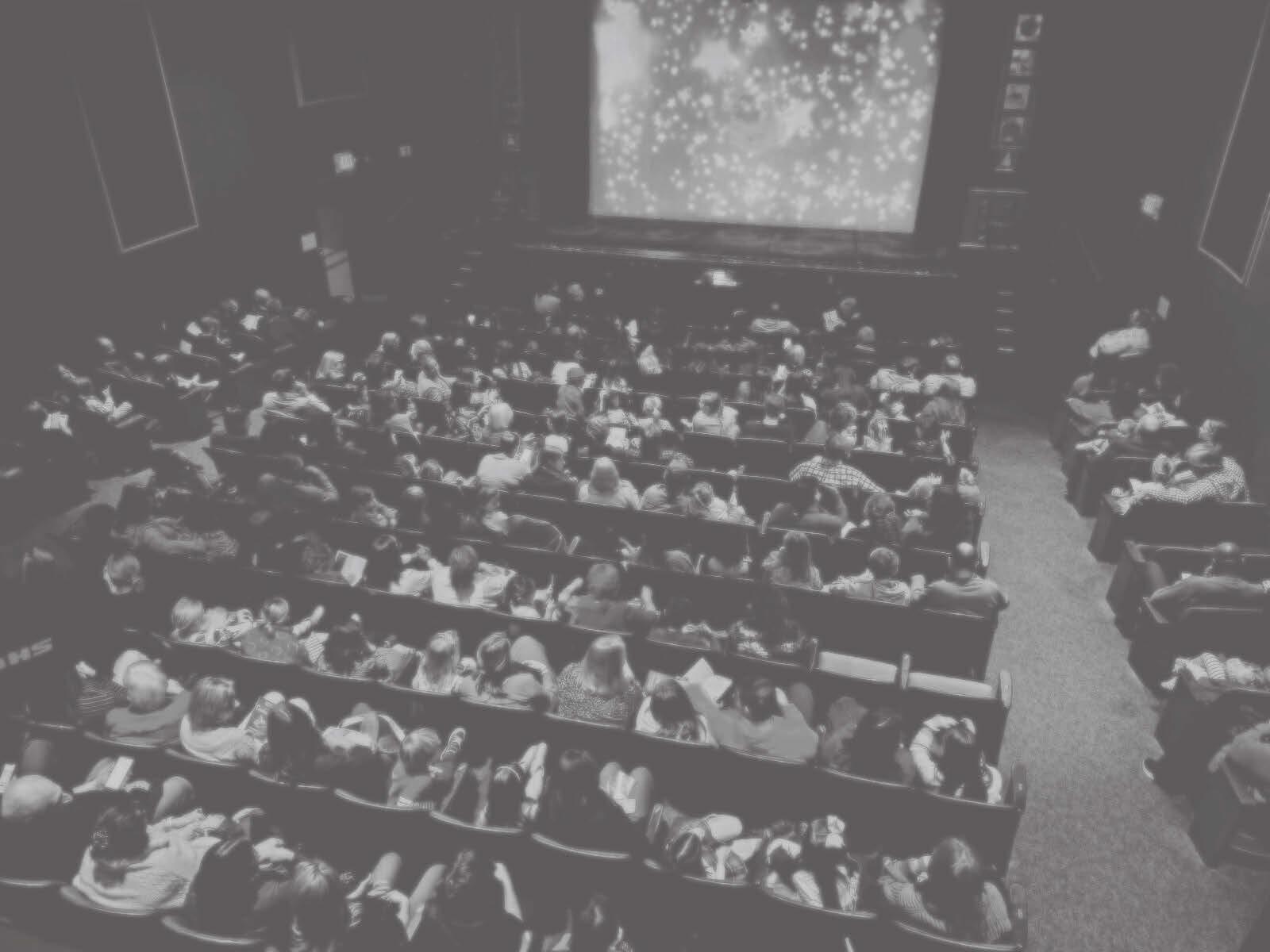




















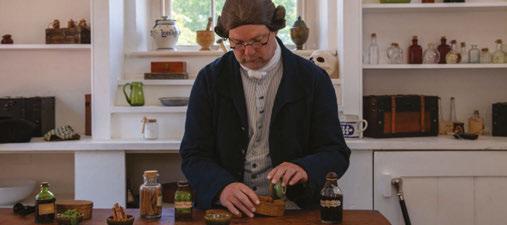

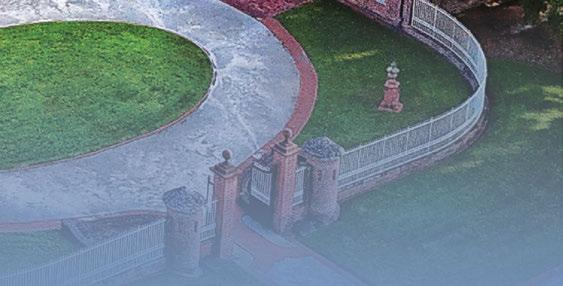



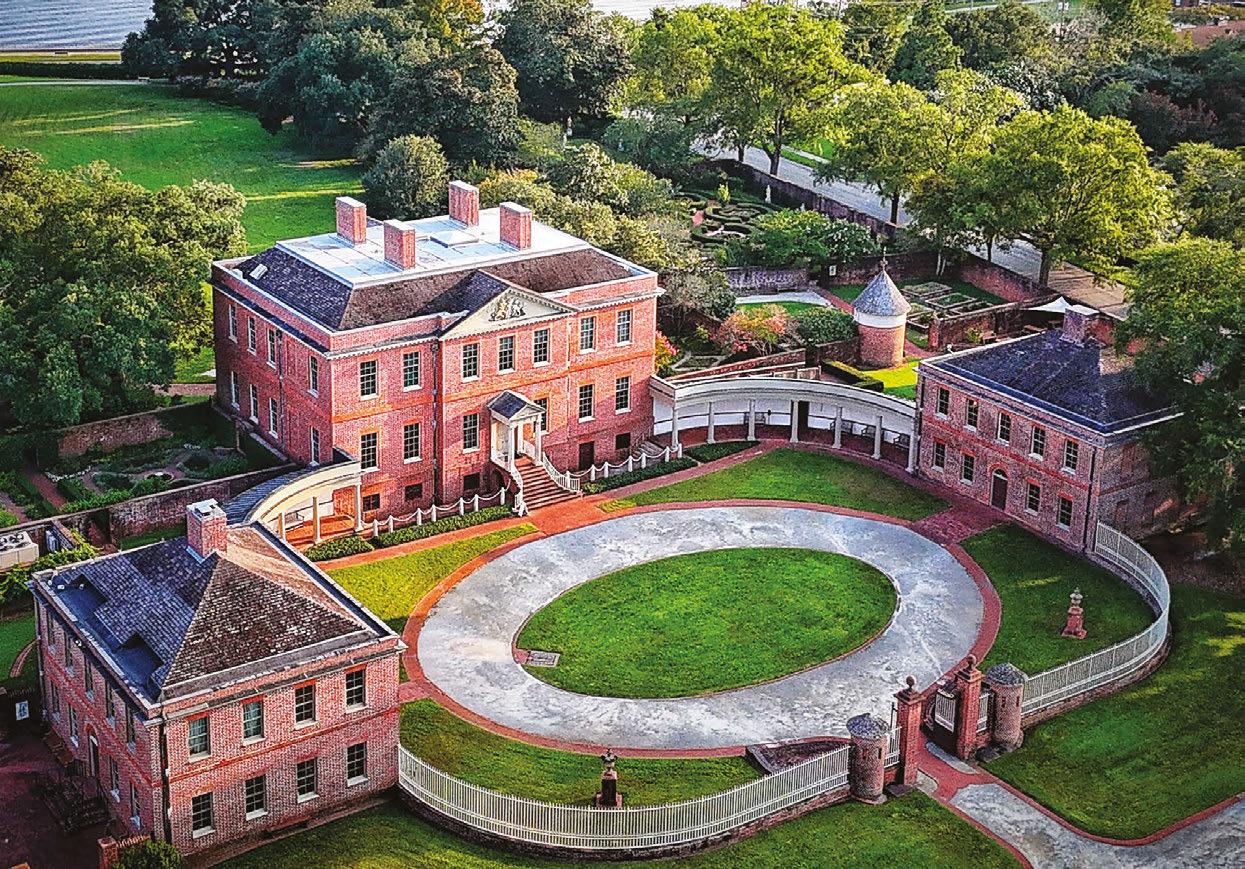
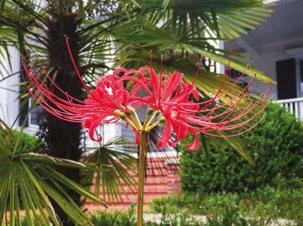
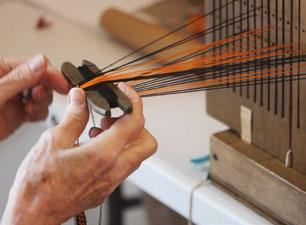


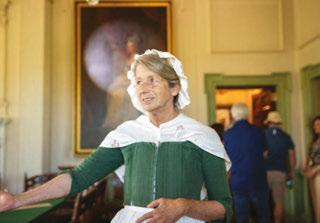



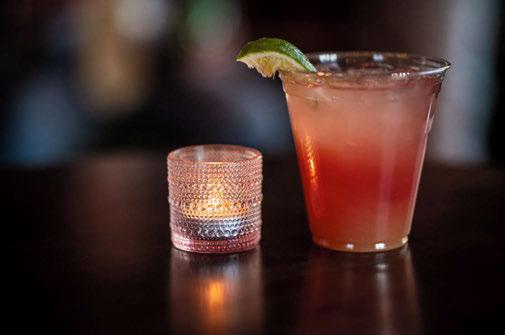


Enhance your pre-show experience by visiting The Lounge. Enjoy a private pre-show lounge space, exclusive entrance with early admission, a dedicated bar with one complimentary beverage, and access to light bites.







Let us take care of the details so you can celebrate stress-free.

Customized Menus
Holiday parties
We pride ourselves on making each event a unique experience that will leave a lasting impression on our client’s guests. From incorporating the guest of honor’s favorite foods to tailoring the menu to a certain theme and style, we work with our clients to create the perfect menu.
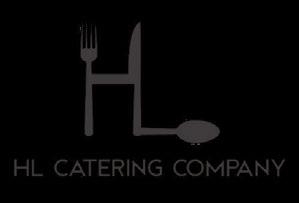


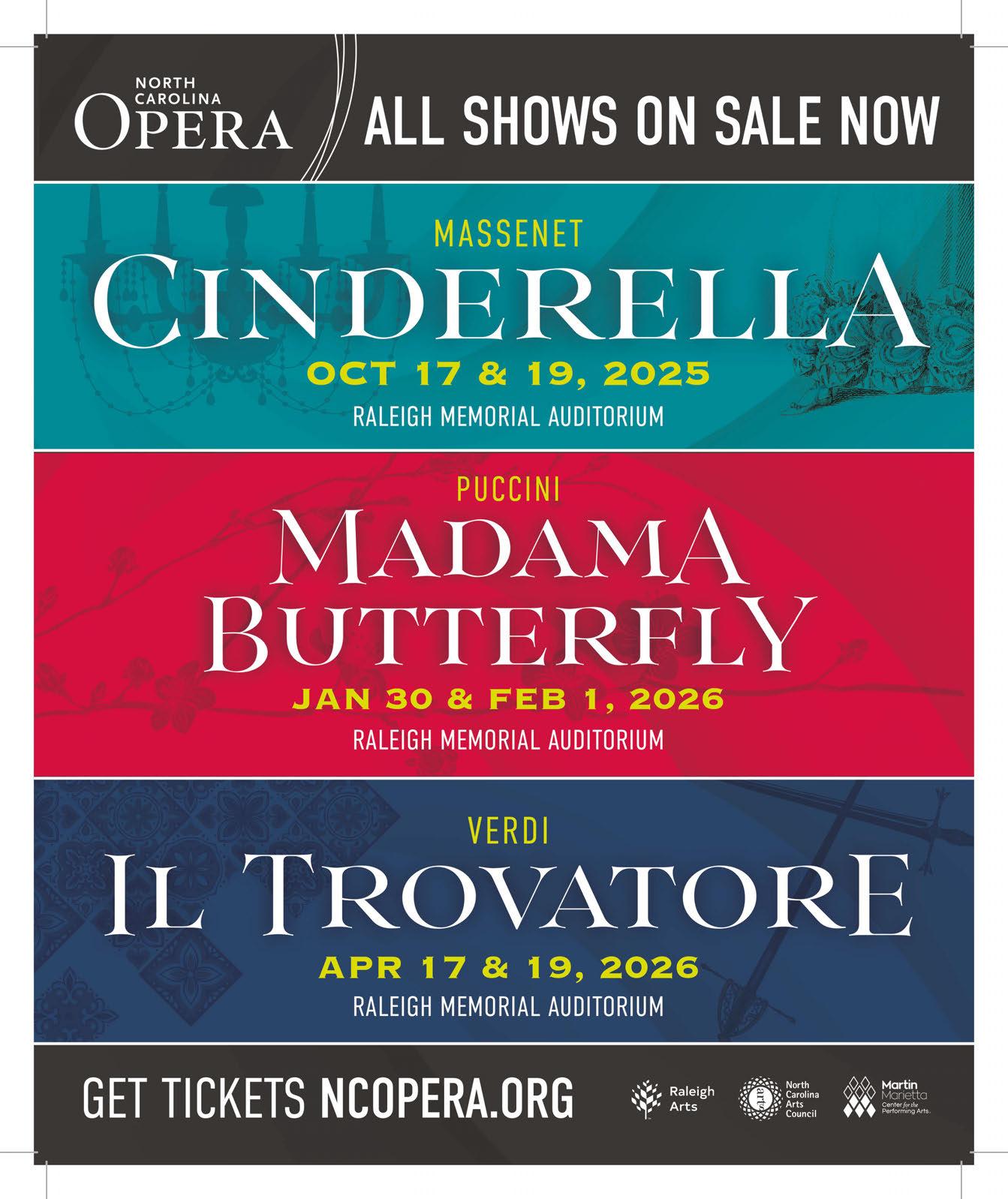


PLEASE JOIN PRETTY IN PINK FOUNDATION FOR THE 9 ANNUAL TH EVERY TICKET FUNDS LIFESAVING MEDICAL CARE FOR LOW-INCOME BREAST CANCER PATIENTS ACROSS NORTH CAROLINA




Join us for an unforgettable evening where elegance meets purpose. The Pink Pumps and Bow Ties Gala isn’t just a party- it’s a powerful tribute to the hope, resilience, and unity of the NC breast cancer community we serve.
Event Website


THE REASON WE GATHER, GIVE, AND FIGHT - OUR CHAMPIONS
At 38, Vivian was diagnosed with Stage 2 breast cancer. With two kids and no income after Hurricane Helene shut down her workplace, she faced the unthinkable: choosing between lifesaving treatment and bills.
“Every bit of support makes a difference— especially for a mom trying to hold everything together. The assistance from this foundation helped my whole family,” she says. “I really, really appreciate everyone who supports this organization. It means a lot to the mother, like me, who has kids and is struggling.” Pretty In Pink Foundation’s mission is to provide uninsured and under-insured breast cancer patients in North Carolina with financial assistance for quality, lifesaving medical treatment.



CALENDAR OF EVENTS
SEP 4 at 6PM - Fancy vs. Frugal Tasting Series
SEP 13 at 1PM - Wine Roulette
SEP 17 at 6PM - Top Wineries’ Prestige vs. Value Tasting
SEP 22 at 6 PM- Venge Vineyards with GM Jason Williams
SEP 23 at 6PM - Pinot Noir ‘Round the World
OCT 2 at 6PM - Orin Swift Wine Tasting
OCT 8 at 6 PM - Chardonnays ‘Round the World
OCT 15 at 6PM - California Nobility
OCT 23 at 6PM - Wagner Family Wines with Brandon Lewis
NOV 19 at 6PM - Far Niente Tasting with Kimberly Unterreiner
Full calendar at westgatewinestore.com
Weekly delivery to the Triangle!

WALTER’s roundup of gatherings, celebrations, fundraisers and more around Raleigh.
AN EVENING IN PARIS
On July 16, WALTER hosted An Evening in Paris featuring author Jennifer Dasal at Gallery C. Dasal just released “The Club,” an art history book about American women studying in Paris in the Belle Èpoque. It was a great party that also included makeovers by Julie Hafer and portraits by Kiara Sanders! Thank you to sponsors Fink’s Jewelers and Green Front Furniture, as well as our partners HL Catering, Westgate Wine, If It’s Paper and Alphagraphics.






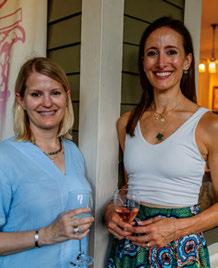


On July 23, we hosted columnist and author James “Jim” Dodson for WALTER Book Club at Theatre in the Park. He had just released “The Road that Made America,” an account of his voyage along the historic Great Wagon Road and the flame-keepers he encountered along the way. Thank you to sponsor Green Front Furniture, as well as our partners Under the Oak Catering, Westgate Wine, If It’s Paper and Alphagraphics, for making the evening a success!


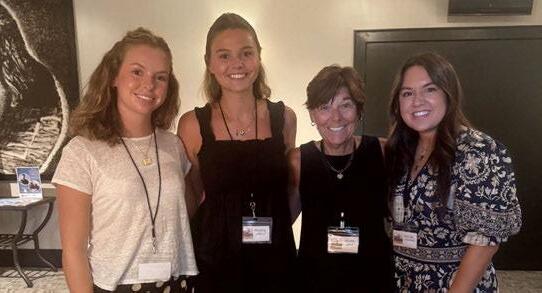

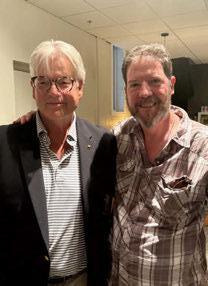

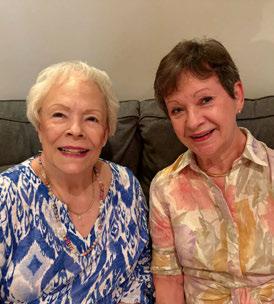




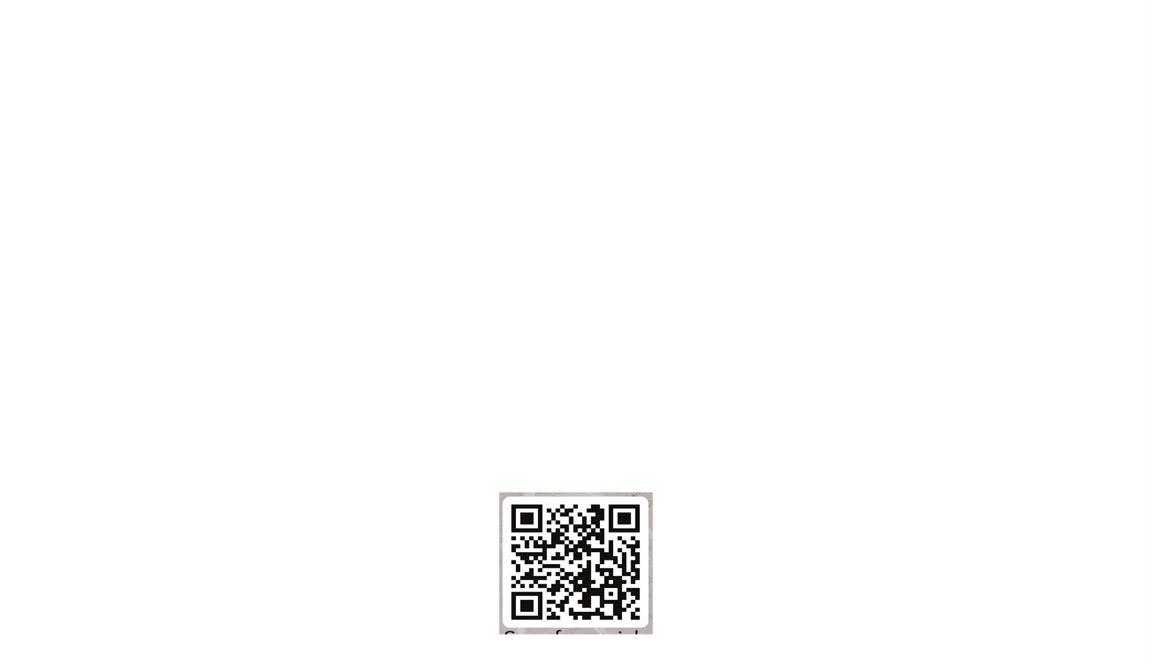


Diaper Train hosted an open house and ribbon-cutting event in celebration of their new location. The opening was attended by former North Carolina Gov. James B. Hunt, who made remarks, as well as the Raleigh Chamber, which also attended and assisted with the ceremony. Diaper Train has distributed 7,200,000 diapers since 2011 and will utilize this new location to continue making a positive impact on the local community.

Chris Drummond, Mary Catherine Grew, Stephanie Austin, Rachel Hunt, Clair Marshall, Katie Lowek, Shani Seidel, Catherine George, Rachel McPherson, Courtney Sorrells, Lisa Gwyn. Back row: Allene Adams, Marty Lewis, Graham Johnson, Sherry Presnall, Alex Flessel, Hunter Mundy-Ferrell, Billy Blackburn


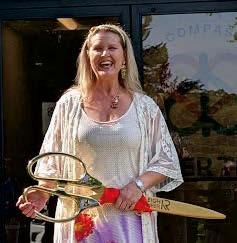
HIGH SCHOOL POET LAUREATE RECEPTION
North Carolina Poet Laureate Jaki Shelton Green hosted a reception with First Lady of North Carolina Anna Stein in attendance at the Executive Mansion on May 13 to celebrate the 2025-26 Orange County Schools and Chapel Hill-Carrboro City Schools high school poet laureates. They also honored the first North Carolina Youth Poet Laureate, Rishi Janakiraman of Raleigh. The runners-up for the North Carolina Youth Poet Laureate were Vanessa Hunter and Kenna Zhang of Cary.


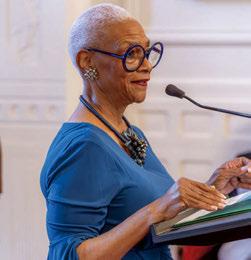
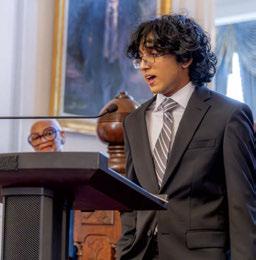

« September 26, 2:00 pm Come Sunday Jazz: Virginia MacDonald Quartet
Also this month at Weymouth Center:
September 4: Author Event: Erika Robuck
September 16: James Boyd Book Club
September 30: Song Circle Jam Session
October 2: Weymouth Literary Ghost Tour Launch with the Ghost Guild
Looking forward to spooky season! Get ready for chills and thrills this October with a haunted, self-guided tour through the historic — and possibly haunted — halls of the Weymouth Center! Join us for the ghost tour lauch on Thursday, October 2nd.


HALCYON ROOFTOP BAR PARTY
On Apr. 30, The Westin Raleigh-Durham Airport hotel hosted an opening party for Halcyon, its new rooftop bar. Guests enjoyed the observation deck experience — soaking in golden-hour sunsets while watching planes glide into RDU.
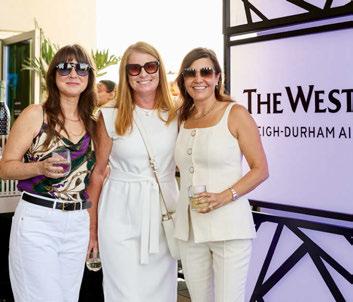
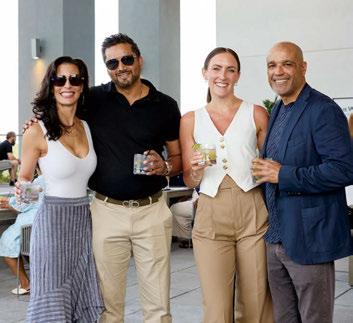
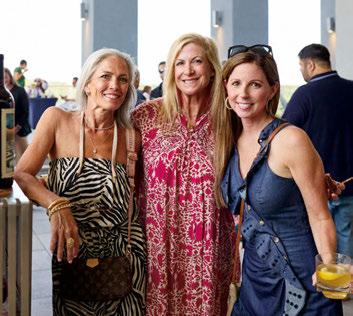


OPENING RECEPTION FOR “(HELD SPACE)”
On May 2, Gallery C held an opening reception for Raleigh artist Caprice McNeill. The exhibit “(Held Space)” was a month-long showing of McNeill’s favorite floral paintings and sculptures. This gardening-inspired exhibit invited viewers to use their imagination and hold space for the emotions and memories evoked through her pieces.

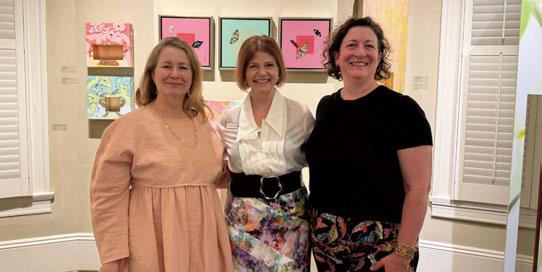











GOLDEN HOUR HOE DOWN
On July 11, Donovan Manor hosted The Golden Hour Hoe Down — a vendor appreciation party honoring their wedding and event industry partners. The evening kicked off with a beer burro, bluegrass and a bourbon tasting, then turned up the fun with line dancing, a mechanical bull and a Texas-inspired menu crafted by Donovan’s Dish.
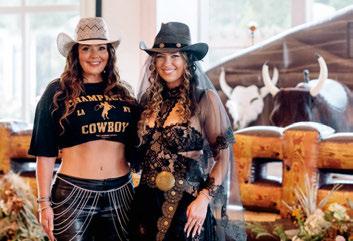



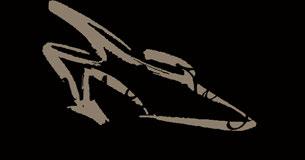




From July 24-27, the Raleigh Convention Center hosted GalaxyCon, a four-day “festival of fandom” that gathers artists, writers, cosplayers and entertainment celebrities from the worlds of comic books, sci-fi, fantasy, anime, gaming and more. WALTER photographer Bryan Regan captured some of the characters.




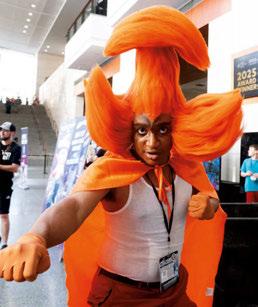






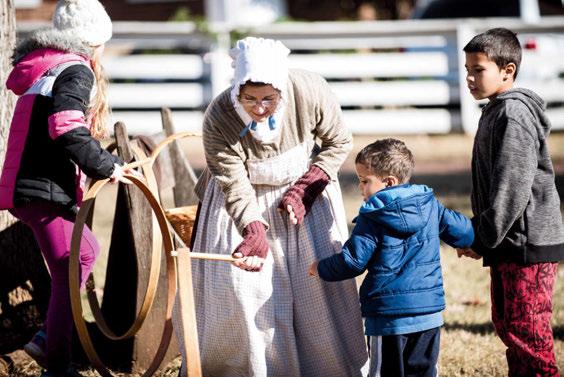




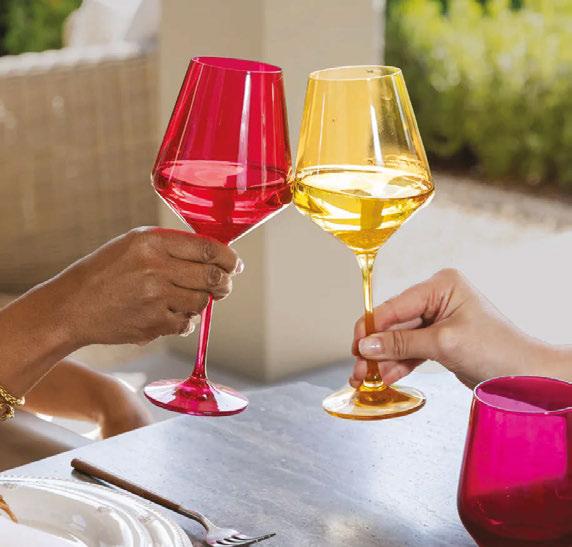

Our patients receive state-of-the-art care in a warm, professional, safe and friendly environment. We welcome new patients!
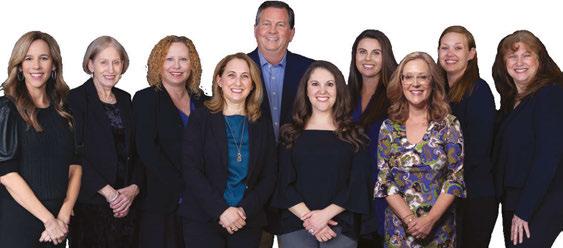

The Summer Party held on July 13 was a huge success! It’s the largest fundraiser every year for the Beaufort Historical Association with guests from Raleigh to the coast getting together for a wonderful cause: keeping the Beaufort Historic Site a special place for residents and visitors from all over the world.





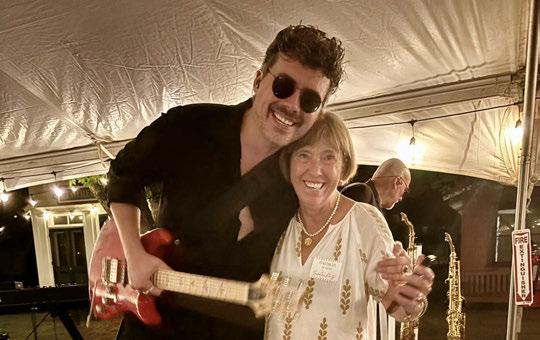
BOBBY BERK VISITS THE TRIANGLE
On June 25-26, celebrity interior design expert, author and TV host Bobby Berk visited Twinleaf Townes, a 102-townhome community from national homebuilder Tri Pointe Homes. Berk visited to showcase the model home designs and provide insight into their features. Berk expanded on his deisgn library, The BB Edit, which highlights the interior collections he curated exclusively for Tri Pointe Homes.

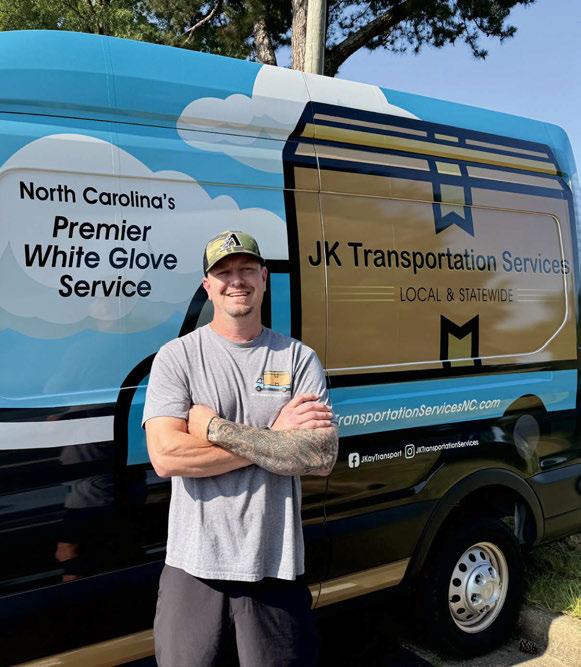

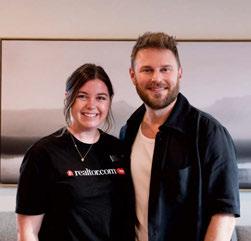
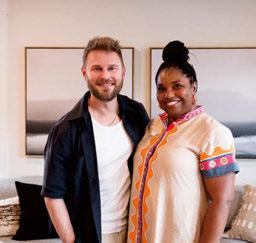
“The team was right on schedule and contacted me prior to arrival. They were respectful of our hardwood floors and provided a careful white glove set up. They went over and above to provide felt strips for the table base to protect our floors. The guys were extremely efficient in putting together and placement of a very heavy table-super friendly too. We had a great delivery experience. We will definitely contact them again if we need delivery or hourly help moving something heavy.” – C. Row

by AYN-MONIQUE KLAHRE
It’s a little thrill to see as you’re walking through Moore Square: a pair of eyes peeking out from a hollow of a tree, a hawk and an owl nearby. They’re close enough to touch but unafraid of visitors — mainly because they’re carved out of wood.
The wood was a centuries-old White oak tree on the grounds that had to come down. “It’s sort of an homage to the tree, giving it a second life,” says Moore Square director David Gill. “We wanted something that would speak to the wildlife in the park. The number carved in its trunk, 1792, represents the year the park was founded.”
They enlisted sculptor Corey Lancaster to make the piece. You may have seen his work in other places: his Squirrel held court in Nash Square from 2019 until earlier this year, when it was retired due to decay, and he’s made sculptures for other places including Durant Nature Preserve and Pullen and Roanoke Parks. “It’s pretty special, getting to carve a sculpture for a place like Pullen Park, where I used to play in the sandbox,” he says. Lancaster is self-taught, one of the few in this area who does this kind of work. His first foray into the art came around 2007 at the urging of his grandfather. “He bought me a chainsaw and asked me to make some mushrooms for his yard,” Lancaster says. He enjoyed doing it more than he enjoyed his job running a restaurant, and soon his side hustle turned into full-time work. (His first-ever commission was for a beach house;

“We wanted something that would speak to the wildlife in the park. The number carved in its trunk, 1792, represents the year the park was founded.”
— DAVID GILL
the client wanted him to carve a pair of flip-flops out of a big cedar log. “I thought, I think I can handle this,” he laughs.) He now gets a lot of commissions for noble animals like eagles
and bears but personally likes to play with more “out-of-the-box stuff” like dragons or comic book characters.
When clients bring him a large log or tree trunk to carve, Lancaster will start by cutting it in half or quarters, trying to get a strong piece and preserve the ring structure. He’s learned what to avoid, including seams down the middle of two-lobed trees, which might make for a weak base, or bits of metal like old nails or hooks from someone using it for a sign or a hammock decades ago. “Especially with these 100-year old trees that have been in someone’s yard or a city park, there’s no telling what’s going to be in them,” he says. Lancaster usually uses about four chainsaws of various sizes to complete a project, from a large one to block out the rough shape to smaller ones for deeper, detailed work.
During the summer, Lancaster is a fixture at fairs across the country, doing speed-carving shows. In the fall, you might find him at harvest festivals or pumpkin patches like the Phillips Farms in Cary. He usually saves his sculpting projects for the winter, when it’s more comfortable to work outside and he has more time in his schedule.
There are plenty of reasons to visit Moore Square over the next few months — Jazz in the Square and Movies on the Lawn continue through September, Lucky Tree Cafe recently opened and there is a holiday market in the works. When you do, say hi to these friendly critters!


Your children. Your family. Your health. Your well-being. Your place.
Your children. Your family. Your health. Your well-being. Your place.
Your children. Your family. Your health. Your well-being. Your place.
Your children. Your family. Your health. Your well-being. Your place.
Your children. Your family. Your health. Your well-being. Your place.
WakeMed Women’s
WakeMed Women’s
From pregnancy and childbirth to mammograms, menopause and more, the care is as compassionate as it is comprehensive. Covering everything and anything female from outpatient and inpatient surgery to specialty and subspecialty care, and the most advanced technology. After all, when it comes to you, your health and your family, you’re the decision maker. And the decision is clearly WakeMed Women’s.
From pregnancy and childbirth to mammograms, menopause and more, the care is as compassionate as it is comprehensive. Covering everything and anything female from outpatient and inpatient surgery to specialty and subspecialty care, and the most advanced technology. After all, when it comes to you, your health and your family, you’re the decision maker. And the decision is clearly WakeMed Women’s.
From pregnancy and childbirth to mammograms, menopause and more, the care is as compassionate as it is comprehensive. Covering everything and anything female from outpatient and inpatient surgery to specialty and subspecialty care, and the most advanced technology. After all, when it comes to you, your health and your family, you’re the decision maker. And the decision is clearly WakeMed Women’s.
From pregnancy and childbirth to mammograms, menopause and more, the care is as compassionate as it is comprehensive. Covering everything and anything female from outpatient and inpatient surgery to specialty and subspecialty care, and the most advanced technology. After all, when it comes to you, your health and your family, you’re the decision maker. And the decision is clearly WakeMed Women’s.
From pregnancy and childbirth to mammograms, menopause and more, the care is as compassionate as it is comprehensive. Covering everything and anything female from outpatient and inpatient surgery to specialty and subspecialty care, and the most advanced technology. After all, when it comes to you, your health and your family, you’re the decision maker. And the decision is clearly WakeMed Women’s.

wakemed.org/womens-services
wakemed.org/womens-services
wakemed.org/womens-services
wakemed.org/womens-services
wakemed.org/womens-services